




Rouge Magazine is the official fashion magazine at the University of Georgia, founded in August 2007 by three students within the College of Family and Consumer Sciences who recognized a need for a fashion oriented publication. It became a registered student organization in 2008. Rouge is a biannual, full color publication funded by dues and a once-yearly allowance from the University’s College of Family and Consumer Sciences. The community of Athens, Georgia is one that Rouge is devoted to supporting through featuring local boutiques in the styling process, photographing various locations around the area, and engaging with the fashion-loving population through events and social media. Each issue is designed entirely from scratch by members of the Rouge staff in conjunction with the executive board and can best be described as the product of eager passion and a true love for the fashion industry.
Rouge aims to create content that inspires the student body to be bold, to serve as a resource for fashion related events from a variety of perspectives, and to stitch together a publication each semester that all students can draw something from, whether it be style inspiration, knowledge of the fashion industry, or an aesthetically pleasing graphic design scheme.
Web: rougemag.squarespace.com
Email: editors.rouge@gmail.com
Instagram: @rouge.mag
Emily Slepsky

Every morning when we wake up, we’re faced with choices that shape our identity: “Who do I want to be today?” and “What am I going to wear?” How we style ourselves each day is more than a simple decision; it’s a thoughtful process of self-expression influenced by a myriad of factors. This issue delves into the science behind fashion, distilling the art of dressing into its essential elements. Deviating from narrative themes of past issues, “The Style Lab” explores the formulaic and deliberate ways we express ourselves through clothing. Just as a scientist experiments in a lab, we approach fashion with a sense of discovery and precision. Color theory, fabric textures, cultural influences, and personal psychology come together to create our unique looks. In this issue, we unravel the hidden influences shaping our everyday style choices, from the cognitive effects of colors to the psychology of trends and the connection between identity and style.
We invite you to explore the theories that shape our style patterns and choices. Study the interplay of different textures and fabrics. Understand the psychological influence of colors we blend together. Every element has its place in the alchemy of dressing, and each page will inspire you to think of fashion as a scientific experiment where self-expression knows no limits.
We hope this issue encourages you to step out of your comfort zone and into your own style lab, where all the elements are at your fingertips to express yourself.
With love,
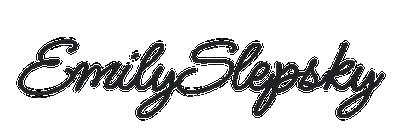
EDITOR CREATIVE
DIRECTOR OF COMMUNICATIONS
SYDNEY FOGARTY
DIRECTOR OF FASHION
CLAUDIA VLASOFF
WOMENSWEAR
EDITOR
LOVELY GRACE PILIBINO
MENSWEAR
EDITOR
NICHOLAS CUCCHI
DIRECTOR OF DIGITAL CONTENT
EVIE KRAKOVSKI
DIRECTOR OF BLOG
EMILY ARREOLA
DIRECTOR OF FINANCE
KEERTANA KONDURU
DIRECTOR OF VISUAL CONTENT
SAVANNAH HERNANDEZ
DIRECTOR OF GRAPHIC DESIGN
EMMA LOVELL
GRAPHIC DESIGN
EDITOR
ZOE DELUCA
DIRECTOR OF WRITING
STELLA TURNER
DIRECTOR OF BEAUTY
ISABELLA KLUG
BEAUTY EDITOR
GRACE GRANT
DIRECTORS OF SOCIAL CONTENT
BEAUTY ASSISTANTS
EVA CARLTON
GRACE MALONEY
ISABELLA MURPHY
KATHERINE SOVICH
LILY MARCUS
SAMANTHA PIXLEY
SUNNY MICHAEL
GRAPHIC DESIGNERS
ALI REIGER
ETHAN ORELLANA
JOLIE BELLAFF
KAYLA PYRTLE
SAVANNAH WILLIAMS
SHEVLIN HARLEY
FASHON STYLISTS
ADDISON ANDERSON
ALYSA ROSSI
ANANYA
BANERJEE
AVERY WARD
CAMILLE BLOCK
DAHLIA COUSINEAU
EMMA DUBARD
EVA CARLTON
FAITH FERRER
GRACE MALONEY
HARPER MAE HERON
ISABELLA MURPHY
ISABELLE RUBENDALL
JASMINE BOTTS
JAZMIN SANCHEZ
JULIA FILOSA
JULIANNE LOPEZ
KATHERINE SOVICH
KATYA READ
KAYLEE MOON
KENDALL DEBRODY
KENNEDY BOGER
KERI KENT
MADDY MARABLE
MADDY PROCTOR
MATTIE GROSS
SALMA HANIFA
SAMANTHA PIXLEY
SHELBY HARDIN
SHEVLIN HARLEY
SOPHIE AUSTIN
SOPHIE EVANS
TYANNA TEJADA
AIDEN MCKANE
ALYSA ROSSI
ASHLEY ROBERTS
ASHTON DONNELLY
AVERY WARD
EMMA DUBARD
EVELYN KIM
ISABELLE BINDER
ISABELLE RUBENDALL
JANKI PATEL
JASIME BOTTS
JAZMIN SANCHEZ
JULIA ENDELSON
JULLY ROH
KADYN MOORE
KAIA KIRKPATRICK
KAYCEE DOAN
KENDALL DEBRODY
KENNEDY BOGER
MADDY MARABLE
MATTIE GROSS
NATALIE COSTEN
SALMA HANIFA
SAM TRITTO
SHAWN BULLOCH
SHELBY HARDIN
YASHVI VADLAMANI
COMMUNICATION COORDINATORS
AIDEN MCKANE
BELLA OZDEN
DAHLIA COUSINEAU
ISABELLE BINDER
JANKI PATEL
JULIA ENDELSON
JULIA GEISE
JULLY ROH
KAYCEE DOAN
KAYLA PYRTLE
KENDALL DEBRODY
KHUSHI VALLIANI
LILY MARCUS
NATALIE COSTEN
SK GIDDENS
TYANNA TEJADA
VICTORIA MORENO
YASHVI VADLAMANI
ZEYNEP KOSEOGLU
GRACE JONES
KHAI CLAY
WILL TRITTO
ZEYNEP KOSEOGLU
ELLA WADDELL
HARPER MAE HERON
ISABELLA CASTRO
KATHERINE FIVGAS
KATYA READ
LAUREN WORLEY
MADELEINE DOUGLASS
MARIANA DETITTA
NIYA BARNESS
SAVANNA WADDELL
SYDNEY ANNISS
PHOTOGRAPHERS
ETHAN ORELLANA
EVELYN KIM
KAYLEE MOON
KEEGAN NELSON
MADDY PROCTOR
SHAWN BULLOCH
SHEENA DEEPAK
SYDNEY GROVE
DIGITAL DESIGNERS
ALI REIGER
JOLIE BELLAFF
KADYN MOORE
KERI KENT
SHEENA DEEPAK
SYDNEY GROVE
CAMILLE BLOCK
MARIANNA DETITTA
SAVANNAH WILLIAMS
KATHERINE FIVGAS
IZZY FARINA
SYDNEY ANNIS
JULIA FILOSA
MIA TANNER
ELLA DRI
MADELEINE DOUGLASS
ERYN GENTRY
BELLA BARR
ISABELLA SANCHEZ
BELLE GOODWIN
SAVANNA WADDELL
Snippets of a Thread
You Are What You Wear
Eclectic Expressions:
Redefining Fashion Through Bold Pairings
Wrong Shoe Theory
Kibbe Image System
Dopamine Dressing Fashion and Healing
Professionals are Improving the Patient Experience with Fashion
Finding Yourself in the Piece
Exploring Natural Dyes Is Boho Back?
Breaking News: Camp Renaissance Saves the World!
The Evolution of Lace:
From Status Symbol to Reclaiming Femininity
Coperni AirSwipe Aerogel Bag
Silver AND Gold?
Color Alchemy in Fashion
Red Hot:
The Chemistry Behind the Color
Wearing Your Heart on Your Sleeve:
Mood Reflecting Fashion
The Psychology of Fashion: How Patterns and Colors Affect Our Brain
Colored Sambas
A (Pant) Suit is Worth A Thousand
Words: How Candidates Utilize Color In Their Personal Style


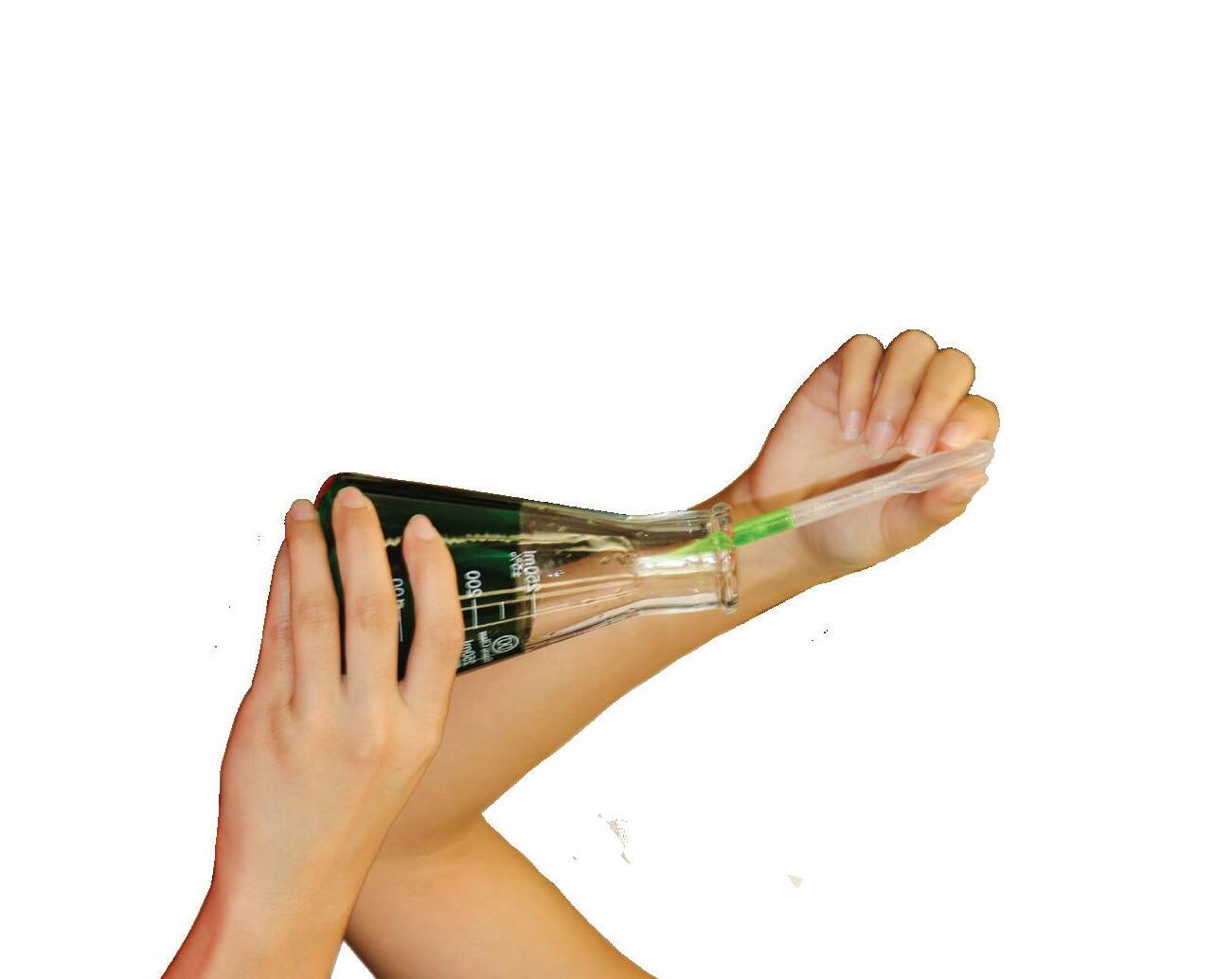

Warm tangerine light illuminating the brick walls. A shelf of clay figurines dancing in the light. Timeworn books stacked and annotated at the base of a fireplace surrounded by reflections of the artist. A golden lamp in the corner with tied fabric around the post. The crisp autumn breeze pours into the propped window as cream curtains float into the room.
Deep chestnut hardwood floors chill to the touch. Strands of silk hair dangling over scraps of fabric spread across the timber. The handiwork of thread in a needle with delicate hands. Rouge fabric and strips of lace waiting patiently to evolve into something sensational. Thoughtful embroidery on the wispy fabric. Handwritten theories of fashion scattered around the workspace. Scribbled designs on whatever paper could be found. The chill pouring into the space, dancing in the melody flowing from the speaker. A soft hum as
she sews to the tune. Intricate handiwork of a creative soul. A memory of her origin.
Her stirring mind full of inspiration ready to explode into mere scraps. Scraps that were nothing. Scraps that were told to be inadequate. Left over from larger projects, better ideas. At first glance just a remnant of something else. A snippet that was intentionally made without knowledge of what for.
Threads from the past that make up what the scrap is. Who she is? Why she is on her floor pouring her soul into her art? Using a thread, her passion, to create her vision. A thread that snapped when there was too much pressure. Continuously unwrapped from the spool even when her hands were trembling from the weight.
A scrap thrown aside, a thread overused.
A scrap thrown aside, a thread overused.
As her inspiration frays, she repeatedly mends. Eyes glistening from the streams of light falling down her cheeks. Stitching together the pieces of herself. Pearls peek through the light as she finds pride in her creation. Weary hands grip her trophy holding it up for the reflections of herself to see. The prize that she finds her worth, the win that pieces everything together.
The lights flashing, the shine in her eyes. The figurines capture each moment she stirs. Fresh magazines broadcasted and known. A rouge carpet beneath her as strands of silk hair dangle from their updo. She sits on a deep concrete floor chill to the touch. On a firm chair waiting ambitiously to hold her. The fabric blown by a gust created by their struts. Designs articulated rather than thrown together. The sensational characters, their fabrics blown by the gust they create as they strut. A soft hum to the tune as they walk past in confidence. Intricate handiwork
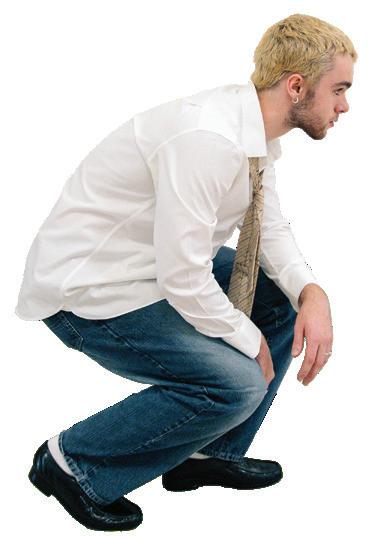








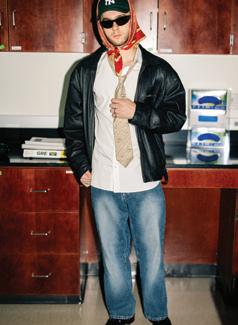

Fashion is more than just a means of covering our bodies or express ing our personal style. It is a powerful tool that can influence our thoughts, emotions, and behaviors in a multitude of ways. This phenomenon, known as “enclothed cognition,” reveals the intricate relationship between what we wear and how we think and feel. For instance, wearing a lab coat or a blazer to work can boost produc tivity and performance due to their associa tions with intelligence. People often embody the abstract meaning of the clothing they are wearing. When you step out in your business casual or your favor ite pair of jeans, you’re not just changing your outward appearance–you’re also altering

your inner landscape. Research has shown that the clothes we wear can significantly impact our cognitive processes, from boosting our confidence to enhancing our problem-solving skills.
Success is seen in all forms, especially in clothing. Formal attire, for instance, has been linked to increased abstract thinking and creativity. When we wear a blazer and slacks– maybe paired with kitten heels– we’re not just looking professional, we’re actually priming our brains for improved critical thinking and decision-making.


Our clothing choices often reflect our inner state, acting as a form of non-verbal commu nication to both ourselves and oth ers. This is why many people are drawn to certain colors or styles based on their mood or personality traits.

Colors play a crucial role in the psychology of fashion. Wearing red, for example, can generate strong emotions and promote energy. Red is a color that exudes confidence and demands attention. Color psychology is the study of hues as a determinant of human behavior. Different colors can provoke various emotions and eactions, and this understanding forms the basis of how businesses market products and how individuals can harness the power of colors in their everyday lives.

For those who experience anxiety, neutral tones like beige, cream, taupe, and grey can have a calming effect. These colors can provide a sense of stability and groundedness, helping to soothe frazzled nerves.
In times of emotional vulnerability, we may turn to fashion as a form of protection. An all-black outfit, for instance, is anything but a basic choice but can serve as a comfortable or safe option. This ultimately provides a feeling of consistency, stability, and strength.
Protecting one’s own mental health is a powerful act, and truly understanding the psychological impact of our clothing choices can be a great tool for managing our mental health. Some ideas for using fashion to boost your mood and well-being can be to dress for yourself, not others, choose clothes that align with how you want to feel, and experiment. Sometimes you have to try something different to discover what makes you feel your best.
By understanding the psychology behind our fashion choices, we can harness the power of our wardrobes to not only look good but feel good too. So, the next time you’re getting dressed, remember that you’re not just choosing an outfit, you’re choosing a state of mind.
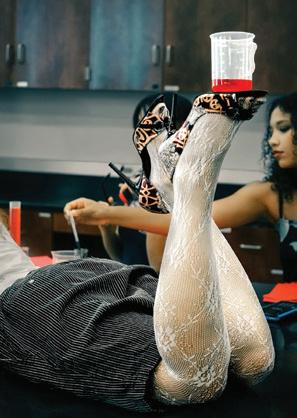



By Sydney Annis
A lace skirt with motorcycle boots? At first, these pairings seem peculiar and unconventional. However, once tried on, these pieces appear to complement each other perfectly. Overcoming the fear of fitting into one particular aesthetic enhances one’s ability to express creative freedom in fashion. Fashion is constantly evolving, and centers around experimentation and individualism. That individualism is reflected when contrasting “vibes” are blended together, and new combinations are discovered. This thought process
is known as eclectic fashion. Exploring uncommon fashion pairings encourages individualism and creativity while challenging traditional fashion stereotypes.
Embracing contrasts within an outfit is key to attaining eclectic style, as the foundation of the idea is combining clothes and accessories that normally would not work together. The first step is to not be afraid to take risks and experiment with different materials, textures, or patterns. Breaking out of traditional styles allows for enhanced self-expression.
To illustrate eclectic fashion, several pairings should be discussed. Leather and lace, while they may be relatively common, are often overlooked. The delicate and feminine connotation of lace paired with leather’s strong, rebellious undertone steps up a simple outfit. Something similar that stems from this same concept is the emerging trend of pairing bloomers with boots. These dainty shorts include lace, bows and ruffles matched with rugged, bold boots that immediately emanate a creative balance between femininity and edge. Another interesting concept is athletic shorts or pants with heels. The two juxtapose one another strikingly; the sporty vibe of the bottoms contrasts with the elegant heels, elevating the entire silhouette. The fluidity of the shorts’ sporty fabric clashes with the rigid, refined look of heels in the best way possible to convey a bold fashion statement.
An additional key principle within this style is layering. The creative freedom within layering is endless, and there are various extents to which one can uti lize it to achieve a distinct outfit. Layering also involves mixing different materials and textures but in different ways. If one is wearing a dress that feels like it is missing a little edge–throw on a pair of jeans underneath and finish with an eccentric jacket to immediately elevate the original outfit. These simple layering adjustments can be the one thing that alters an outfit from simple to stylish. Once again, lace is a lovely material to layer in an outfit. For example, a plain T-shirt and jeans. Think about adding a sheer lace skirt over the jeans, and a dull outfit is now transformed into a dynamic look of comfort and flair.

When these simple and contrasting elements are put together, they create an intriguing outfit that reflects one’s unique style and consciousness of sustainability within fashion.
Eclectic fashion encourages creative self-expression by embracing risks and breaking boundaries. Whether through layering or mixing aesthetics, the result is a chic, personalized outfit. Sustainable shopping enhances this style, allowing individuals to express themselves while supporting the environment. By embracing creativity and challenging traditional fashion norms, individuals can cultivate their own distinct style and contribute to a more sustainable future in fashion as well. Therefore, don’t be afraid to mix, layer, or match when designing outfits—

each bold choice expresses individuality and helps redefine FASHION.






farina

Styling has always tested the limits of what you seemingly shouldn’t do.

Owning an absurd number of shoes means constantly struggling to decide which pair looks best with a particular outfit. Usually, the general direction I’m looking for isn’t too difficult to determine, but landing on just one pair raises the question of which is the “right” shoe. However, recently, I have found myself faced with an additional layer to this query. What if instead of deciding between several pairs of a similar style shoe, we chose a shoe that we’d typically never consider??
While there is technically no such thing as right or wrong in fashion, the emergence of the “wrongshoe theory” has prevailed as a new technique to distinguish and individ-
ualize outfits. The wrong-shoe theory, a term first coined by stylist Allison Bornstein, encourages you to rethink the conventional shoe that matches the aesthetic of the rest of your outfit and go in a different, unexpected direction. In her TikTok first explaining the theory, Bornstein describes how when a look can seem predictable or unoriginal, picking the least likely shoe immediately adds personality. Pushing past that initial instinct to wear the correct shoe forces the wearer to make a decision about what to wear, and not be influenced by what is traditionally stylish Bornstein told Glamour “In order to have good style, you actually have to really know yourself, and that’s actually very deep,”

A soft, satin dress definitely does not fall into this category. These two items surprisingly pair well together to create a bold display of contrast, yet balance.
This idea is not new to fashion. Styling has always tested the limits of what you seemingly shouldn’t do. Whether it is pairing contrasting materials or matching unique colors together, experimenting with atypical combinations is a recurring theme in fashion. Now, wearing the “wrong” shoe has been added to this list.
when
JUST ANOTHER pair of SHOES,
look into your closet and see what you never usually wear,
you think you need to buy and you no longer N EED to go through with the NEED





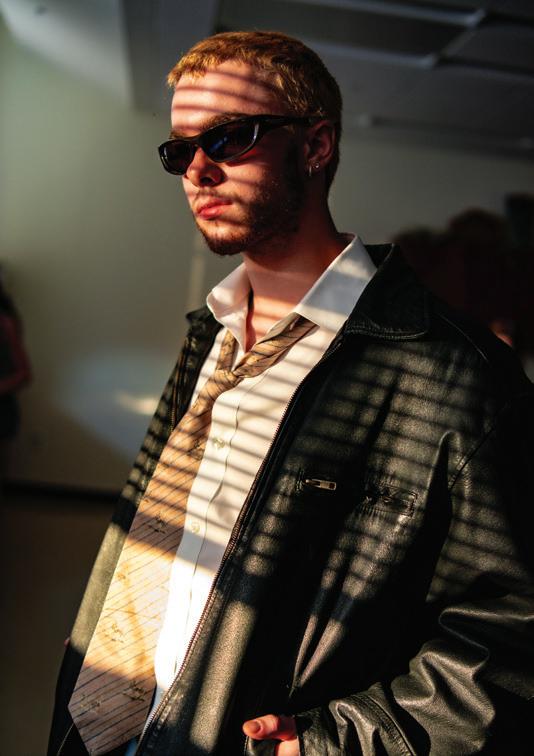

Mariana DeTitta
The Kibbe “image identity” system was coined by stylist David Kibbe. He said there are 13 body or “image identities” in Kibbe’s system, grouped into five different families: dramatics, classics, naturals, gamines and romantics. This system focuses on balancing a person’s natural characteristics—like bone structure, body proportions and facial features—with clothing styles that enhance these traits (Nguyen,

Note that The Kibbe body types are not body types, per se.

In Kibbe’s book, the body types are referred to as arche types or image identity types. The main principle of this system is Yin and Yang. The terms “contrast” and “blend” refer to the way Yin and Yang come together within a body. These archetypes exist on a spectrum of Yin and Yang which come together in contrasts to make an image identity (Ilchi, 2023).
To fully understand the Kibbe Image System, one must ask themselves these questions to know their own “image identity.” This activity is meant to be fun, validating, and help one embrace their own body type - not to invalidate any specific group. With this being said, remember that fashion is about self-expression and finding what makes you feel truly confident in your body.
How would you describe your facial features?
a) Defined, with sharp angles.
b) Soft and rounded, with gentler features.
c) Balanced, not too sharp or soft.
d) Bold or strong, very distinctive
e) Full or lush
What kind of silhouettes do you feel the best in?
a) Tailored, structured cuts with sharp edges.
b) Flowing fabrics that drape elegantly.
c) Fitted clothes with clean lines.
d) Bold, dramatic pieces with strong shapes.
e) Feminine, form-fitting styles with romantic details.
What do you look for in accessories?
a) Minimal or sleek pieces that add structure.
b) Delicate, understated pieces with soft lines.
c) Timeless, elegant accessories with simple designs.
d) Bold, statement pieces that stand out.
e) Vintage-inspired, ornate pieces.

How do you carry yourself?
a) Graceful and elegant, with a strong presence.
b) Gentle and ethereal, with softer movements.
c) Poised and balanced.
d) Confident and bold, with purposeful strides.
e) Feminine and romantic, with graceful movements.
If you were to choose a fabric, which one appeals to you the most?
a) Structured fabrics like cotton.
b) Light, flowy fabrics like chiffon or satin.
c) Medium-weight fabrics like wool or crepe.
d) Bold fabrics like velvet or leather.
e) Lush and luxurious fabrics like lace or soft velvet
What type of prints and patterns do you gravitate toward?
a) Sharp, geometric patterns.
b) Expressive florals or soft abstract prints.
c) Simple patterns like stripes or solids.
d) Expressive patterns that make a statement.
e) Delicate prints like lace.
What’s your ideal aesthetic?
a) Modern, sharp and refined.
b) Dreamy, soft and delicate.
c) Sophisticated and timeless.
d) Dramatic, bold and powerful.
e) Feminine and elegant.
You have sharp features and a strong presence. You take control of a room and are a force to be reckoned with. Structured and tailored clothing suits you best according to Kibbe. Bold and powerful outfits suit you well. Brands like Balenciaga, Celine and Alexander McQueen blend minimalism with a modern, cutting-edge flair that aligns well with the drama of bold shapes and simplicity.
Your essence is soft, feminine and ethereal. Consider flowy fabric and silhouettes. A brand like Chloè or Valentino will suit your soft features through the usage of elegant fabrics, flowing lines and romantic detailing.
You have a timeless sort of beauty. Clean, simple lines and elegant styles suit you best, enhancing your natural beauty. Think Chanel tweed suits and clean lines that embrace your beauty’s permanence.
You are bold and dramatic, with strong features and a flair for dramatics. Look at statement pieces and vintage clothing to dress yourself in a way that is true to you. You have a powerful presence: embrace it. Brands like Dolce and Gabbana and Vivienne Westwood fit your scene perfectly with their bold motifs and celebration of femininity.
You have luscious curves and a romantic aura. You are the embodiment of feminine grace with a touch o f drama. Form-fitting, romantic styles and rich fabrics bring out your best. Oscar De La Renta, Versace and Balmain’s dramatic lines, luxurious details, and, at times, sensual elements make these brands a perfect match.

The fashion realm is all about understanding what you as an individual desire in clothing.
Whether you’re a Classic, Theatrical Romantic, Soft Dramatic, or Dramatic, the right styles can enhance your natural beauty and hopefully give you the confidence you need to embrace these styles and magically transform your self-expression. Embracing your individual features and tailoring your ward-
robe to reflect your essence allows you to celebrate your body and personal style in a way that feels authentic to you. So, explore the brands that resonate with your identity, experiment with new looks, and remember that fashion is about what makes you feel empowered, beautiful and true to yourself.
Let your wardrobe tell a unique story, whatever that may be.
Katherine Fivgas
Dopamine is the neurotransmitter we all need, bringing pleasure and satisfaction we constantly chase after. However, too much is lethal. Recently, Dopamine has entered the realm of fashion and has come to light as a new trend: dopamine dressing.
Dopamine dressing is exactly what it sounds like: dressing to increase joy. It includes abundant color, as colors psychologically affect our moods (Styx, 2024). For some, getting dressed or figuring out what to wear can be the day’s most challenging and stress-inducing moment. However, Dopamine dressing may be a defense system used to combat the stress of fashion choices.

Queen, n.d.). As the owner of a few QOS pieces, I must admit that I feel brighter and better in my glittering ensembles.
Some fashion designers, including brands such as Queen of Sparkles, Farm Rio and Dressed in Lala, have either purposely catered pieces to dopamine dressing or inadvertently engaged in it.
Queen of Sparkles is “committed to helping every woman shine a little
Farm Rio, a Brazilian brand dedicated to sharing culture and color with the world, highlights the innate appeal of color and the cheer it can bring. Items are emotion-inducing, with delicate and intricate designs in all shades because they “believe in the existence of happiness [...] coloring the world one print at a time.” Farm Rio addresses dopamine dressing from a different angle. Rather than focusing on neons and embellishments, it leans towards

the natural beauty and glow of the world with more muted yet gorgeous tones and designs (Dress in Happiness, n.d.).
Dressed in Lala was founded and is run by Lex Nevin. The brand rebels against fashion norms and creates pieces that help women stand out– rather than fit in. Lala pieces include mixed patterns, varying silhouettes and colors. They aim to break the rules. Lala basks in the light of dopamine dressing, looking to create pieces that inspire women to stand tall. Lala states, “The world needs your magic” (About Lala,n.d.).
Some popular pieces include satin striped suits, sunflower printed pants and anything else your heart could desire. These brands, as well as many more, embody the purpose of dopamine dressing: to bring joy to daily life through fun fashion choices. Most people need to realize the psychology behind the concept they are participating in. These brands work to inspire individuals and bring confidence to the consumers of their pieces. The question is, why? Besides the founder’s goals and visions, what influenced brands to create pieces that excite wearers? What draws us to create and wear such creative pieces? It lies in the composition of our brain. Dopamine dressing is no scam or scheme by corporations. Evidence shows that colors, texture, fit and other
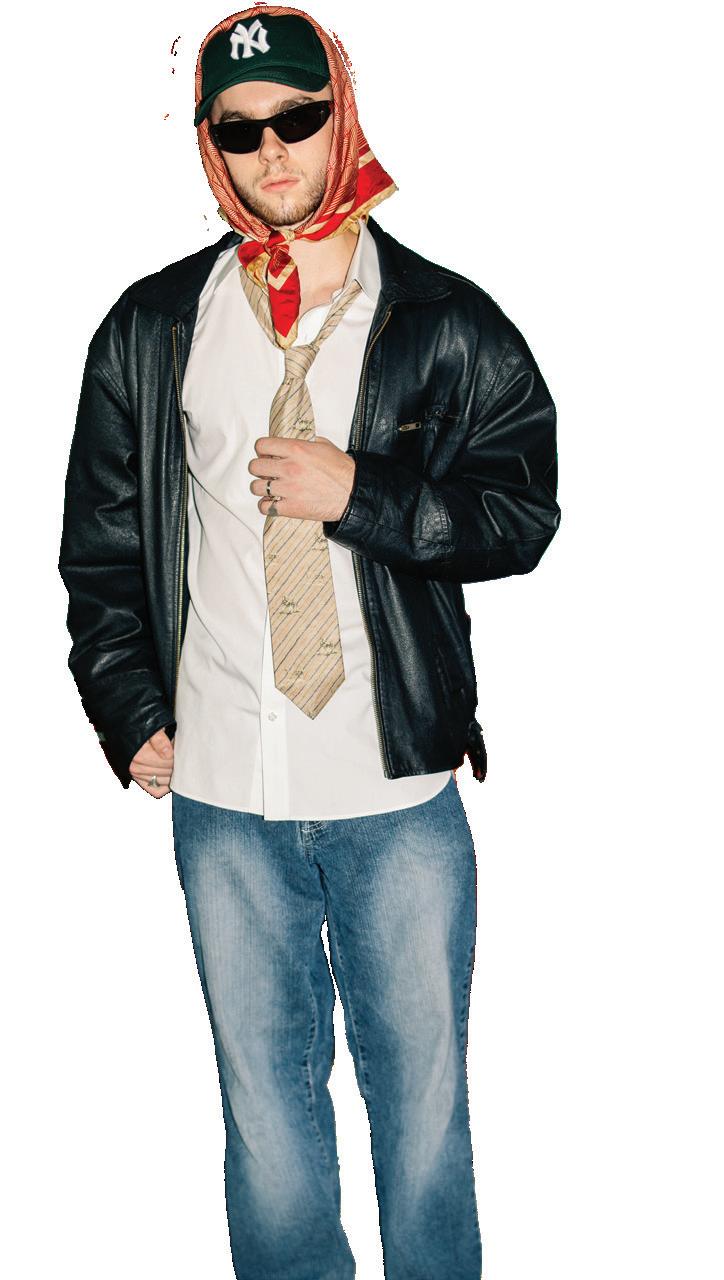
compositions influence emotions through physiolog ical, psychological, and environmental responses. Wearing warmer colors may increase arousal, while cooler-toned colors may calm the body, which can be attributed to associations based on cultural and personal experiences. This is why white is worn by brides for pu rity (Jacobs & Hustmyer, 1974).
Why else would Anger be red and Sadness be blue in Disney’s Inside Out? On a biological level, humans have possibly formed subconscious preferences for things such as green fashion due to its association with fertile landscapes, promoting life and wellness in the past and calming us (Elliot & Maier, 2014).

good, especially if we feel confident in our appearance in the outfit. If bright green makes you happy, wear it. If sparkly boots make you smile, put them on! In our world, more dopamine will not hurt anyone.
Like many brands, we may unconsciously participate in dopamine dressing because it makes us feel good. Picking out clothes we like, despite personal or psychological reasons, is bound to make us feel
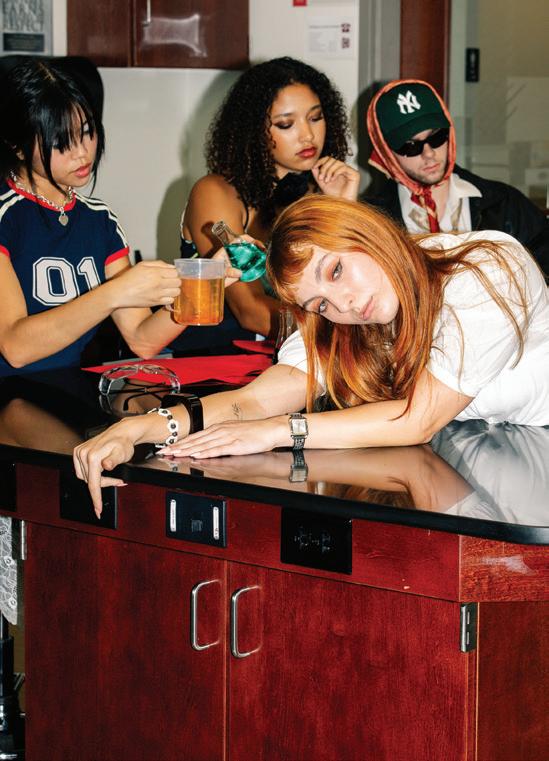




By Eryn Gentry
At first glance, fashion and healthcare might seem as mismatched as wearing floor-length neon to a little black dress girls’ night. However, some professionals are reimagining patient attire to improve both functionality and the overall patient experience.
When you picture a hospital patient, the image is probably of someone in a hospital bed, dressed in a dreary, oversized hospital gown. Being a patient often feels dehumanizing and disempowering, as it strips individuals of their privacy, personal style, and daily routines.
By applying the psychology of fashion and incorporating textile design and clothing adaptability, they aim to restore a sense of dignity, identity, and comfort. In doing so, they not only improve patient well-being but also add a touch of style to an otherwise challenging time.
Some researchers are actively investigating a crucial question: Are the current hospital gowns

even good? In one study, hospital gowns were often called ‘dreary’ by both patients and hospital staff. One patient described how color “lightens your life,” but could not find such color in the gown that they wore. Another patient found immense joy when he was able to accessorize his hospital gown by wearing his gold chain. He also mentioned how happy colors bring people positive thoughts and therefore might help people heal (Lucas & Dellasega, 2020).
Many patients also talked about how hospital gowns robbed some of their independence (Lucas & Dellasega, 2020). The usual ties in the back of the gown can prevent patients from dressing independently. Hospital gowns are also one-sizefits-all, so some patients will often require assistance in adjusting gowns for their comfort. There are count-
less other anecdotes from patients, family members, and providers expressing other nuisances of basic hospital gowns.
One of the most beautiful things about fashion, especially in the modern world, is the freedom to dress in whatever way suits an individual best. The freedom to choose a shirt, shoes, or a skirt simply because you want to wear it is something that might be taken for granted. When being confined to a hospital room already limits a person’s freedom, a hospital gown designed with the patient’s emotions and physical experiences in mind adds a little extra care that everyone deserves in a challenging time.
One such person striving to create better patient clothing is Olivia Burns, founder of a hospital gown company called Hypoplas.
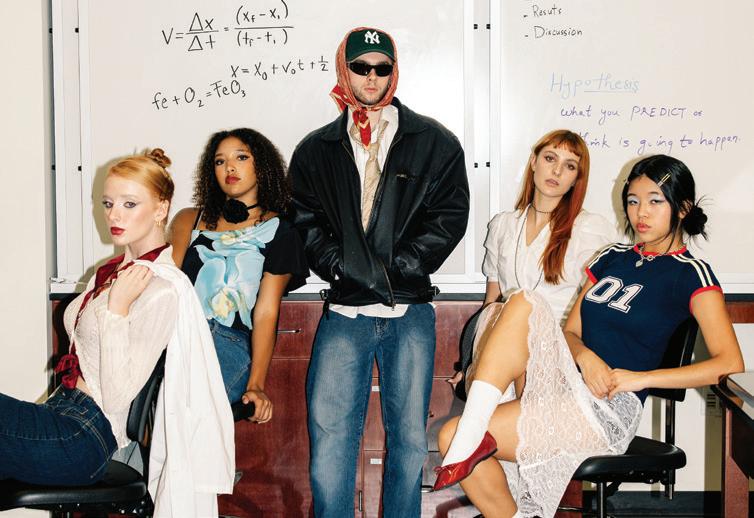

Pulling from her own experience as a patient during childhood, Burns has designed a hospital gown that achieves comfort, practicality, and modesty for its wearer. It also proves to be more eco-friendly than a normal hospital gown. The Hypoplas gown
saves 2,000 liters of water, nearly 500 U.S. dollars, and 51 kg of textile waste, per 1,000 gowns made. Seeing as how hospitals produce over 5 million tons of waste per year, any opportunity for sustainability is welcome.

A different team of researchers tested two options for new patient attire in real-world hospitals. One design is a longer-than-normal hospital gown, and the other design is a shirt with a bottom that converts to both a pant and a skirt. These options each included a front drawstring neckline, front and back plastic snaps, fabric modeled after standard sleepwear, and more coverage. Patients gave an overall preference to the new designs.
Anotherperson making strides in patient fashion is Dr. Naoko Fujii, a Japan-based expert in art and design. She started her work because she wanted to “help sick patients feel better by designing a stylish hospital gown.” Dr. Fujii found a wonderful solution in a type of beautiful tie-dye fabric called Arimatsu-Narumi Shibori. This textile is produced through heat-set processing, stabilizing synthetic fibers through heat, which creates a soft and malleable fabric. It is practical but still adds a little extra flair not seen in normal hospital gown fabrics (Fujii, n.d.).
Hospital staff also reported high marks for the new gown, which allowed for easier care of the patient (Frankel et al., 2021). These new designs honestly make a dramatic fashion statement, with one of them resembling a piece of sophisticated outerwear not far off from the structure of some garments seen in Balenciaga’s Winter 2020 collection (Mower, 2020).


When working in a hospital, patients will sometimes remark on how gross, unkempt and abnormal they feel. Sometimes hospital workers offer to brush a patient’s hair, braid their hair, wash their face, or help them into a piece of their own clothing. It is sometimes these basic, everyday actions, these seemingly small thoughts, that can ultimately bring a relieved sigh and a bright smile to a patient’s face. In the same way, small, thoughtful details in the design process can turn a hospital gown from something basic into

While most patients aren’t focused on looking runway-ready, what they wear still matters. It is up to designers, textile experts, hospitals, and providers to find solutions for better patient clothing. The medical field and the world of fashion are ever-changing.
Now, people are seeking to advance them together, so that all of us, no matter if we are in the hospital or on the street, can achieve comfort, independence, and a little more positivity.





What makes your outfit complete? The indescribable feeling of putting together a look that seamlessly reflects your persona is not to be overlooked. Finding confidence in fashion choices allows us to explore new ideas and push the envelope of our worldview. The process of outfit building is personal freedom at its finest. In this new age of having inspiration at our fingertips, it is vital to use it to our best advantage. Stepping outside of what is comfortable and venturing into piecing together the wacky with the unusual gives us something truly unique. The beauty of style is that it is something we all have and something that we all can truly make our own. With this being said, we are often faced with the age-old question: What do I wear? To some, a simple pair of jeans and a T-shirt fulfill their expectations, yet many aim higher. Those who place importance on their appearance, particularly those who yearn to step outside the box, face many decisions in the ever-changing world of fashion. In this modern age of media, new looks are presented to us every day at the touch of our fingertips. As innovation is made and possibilities grow, so too does the desire to debut a never-before-seen look. Finding what suits you best is key to understanding what your true style is. Just like hearing that one song, or watching that film that resonates deeply within you, your style should feel like home. What you wear and how you wear it is an external expression of who you are. It reflects your aspirations and manifestations and pushes you to become your most authentic self. Don’t let what has been done before stop you from exploring it yourself; use previous looks as sources of inspiration.
The importance of acquir ing the perfect blend of colors, materials, and textures is what makes outfit curating such a unique experience. This is a truly creative process as we explore what compliments ourselves and others and shines a light on using abstract pieces to create a classic look. There are no true rights or wrongs when it comes to style (despite what some people may attempt to tell you). Whether it’s the juxtaposition of bold hues with soft pastels, or bringing 80s accessories into your everyday look, fashion should be a fluid, ever-changing expression of your thoughts.
As you continue to find yourself with new looks, remember to embrace the thrill of choice. Mixing and matching is a classic concept that has no bounds. Fashion is not just about the pieces you wear - it is about the story behind it. There is so much to be explored when we look at the varying trends throughout the decades. The beauty of the media today is that there is an outlet to express yourself, no matter what style resonates with you. Take what you see - what makes you feel invigorated to explore what lies in your closet - and make it your own. Your style is your signature- an unwavering statement of your identity.




In a world increasingly focused on sustainability, the fashion industry can turn to nature for inspiration. Natural dyes, derived from the environment, offer an eco-friendly alternative to the widely used synthetic dyes. As more designers and consumers seek sustainable options, exploring natural dyes supports a greener future and adds a unique touch to modern fashion. With innovations in sustainable dyeing methods, the future of fashion can see a revival of natural dyes, creating fashion in an environmentally conscious way. Synthetic dyes have been favored in the textile industry for many years, despite their harmful impact on health and the environment. They are primarily used for their color fastness, ensuring the textile colors remain vibrant, even after multiple washes. Synthetic dyes also offer a wide range of pigments that cannot be easily
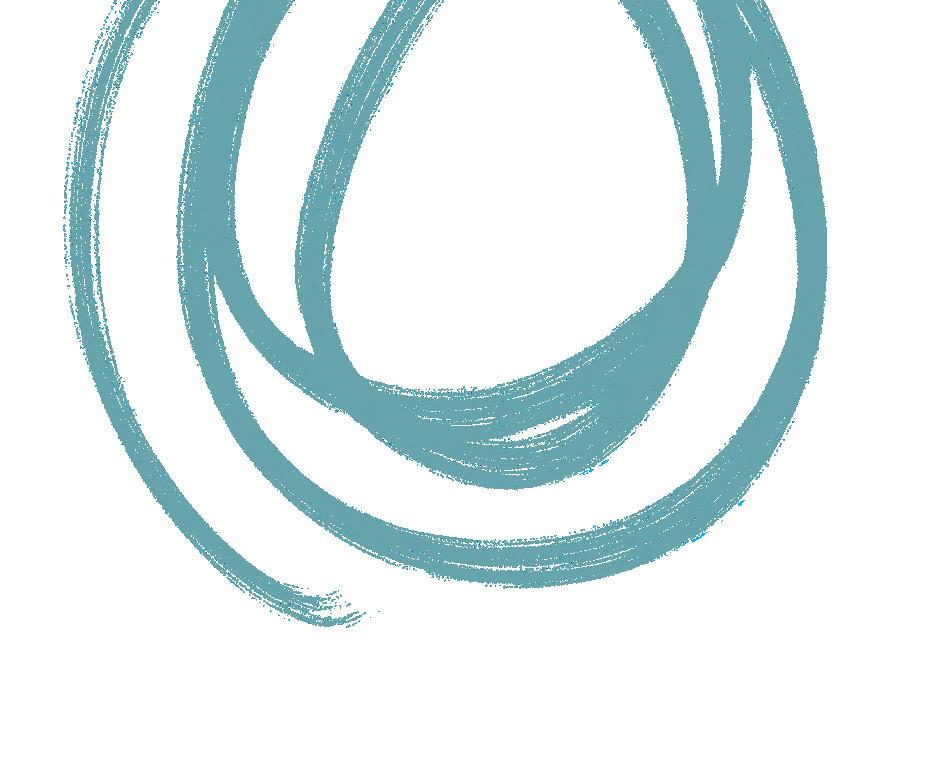


achieved with natural dyes, making them appeal ing for mass production. The ease of application and their cost effec tiveness further add to their demand in the textile industry, contrib uting to the production of over 70 million tons of synthetic dyes per year. However, this conve nience comes with many consequences.




The textile industry is considered the largest generator of colored wastewater. Approximately 20% of dye applied in textiles is not used and is released into the environment through wastewater. This untreated water poses significant risks to both human health and the maintenance of wildlife, as synthetic dyes are not biodegradable. They stay in ecosystems for a long time, accumulating in nature and causing longterm pollution. The most popular dyes belong to the azo, anthraquinone and trimethylmethane classes, all of which are highly toxic. These compounds cause various harmful effects, from the spread of diseases among humans to disruptions in the environment. While synthetic dyes may offer short-term benefits, their repercussions make them an unsustainable choice for the future of fashion.




Natural dyes, derived from botanical, mineral and animal sources, have been used for centuries to dye fabrics. Cultures across the world developed their own dyeing techniques using local materials. From flowers, leaves and roots to minerals and insects, many natural materials have been employed to produce rich and diverse hues.
These techniques have been passed down through generations, preserving both cultural heritage and sustainable practices.
Throughout history, countries like China, Nigeria and India have made significant contributions to the area of dyeing textiles. China was an early leader in dyeing techniques, known for its expertise in silk dyeing. Chinese artisans developed methods to extract dye from plants, which formed the foundation for their dyeing processes. Nigeria also has a rich tradition of using dyes for textiles, crafts and ceremonial purposes. Nigerian dyers used boiling, fermenting and soaking to extract vibrant colors from natural sources. This tradition has been a crucial part of their culture, creating beautiful and meaningful designs. In India, dyeing techniques like tie-dyeing and block printing have long been practiced, with botanical sources playing a vital role. Indian artists derive plant-based dyes from roots, leaves, stems, flowers and fruits. The vibrant hues created by these plants are the result of the active chemical compounds within them.


While plant-based dyes are the most used, dye can also come from animal and mineral sources. Animal-based dyes come from materials like shells, bones and secretions, while mineral-based dyes are sourced from naturally occurring substances. Mineral-based dyes, made of inorganic compounds, are valued for their durability and resistance to fading, making them a long-lasting choice for textile dyeing across cultures.
More and more brands in the fashion industry are turning to natural dyeing techniques as part of a larger shift toward sustainability and underconsumption. Patagonia, for example, created a collection called “Clean Color,” where clothes are dyed using plant-based dyes from sources like mulberry, pomegranate, Carmine and indigo. Similarly, Nudie Jeans has embraced the use of natural dyes in its clothing. As the industry moves towards sustainability, natural dyes are becoming a more popular choice, reducing its reliance on synthetic alternatives. The concept of underconsumption will encourage customers to buy fewer clothes, which helps decrease the demand for mass-produced garments and further reduces the need for synthetic dyes.



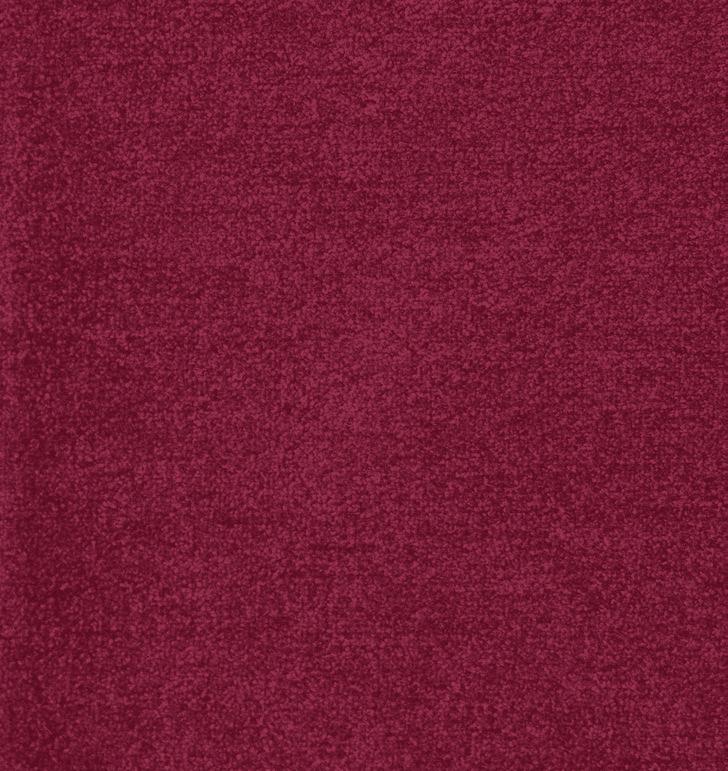
The fashion industry can reduce its carbon footprint and dependency on harmful synthetic dyes by turning towards natural dyes. Although synthetic dyes have been favored for their profitability, their environmental costs are too great to ignore. The use of natural dyes not only offers a greener future for fashion but also reconnects modern practices with

old traditions from cultures around the world. As more brands and consumers embrace eco-friendly alternatives, the fashion industry can lead by example, promoting innovation that respects both the planet and the people on it.
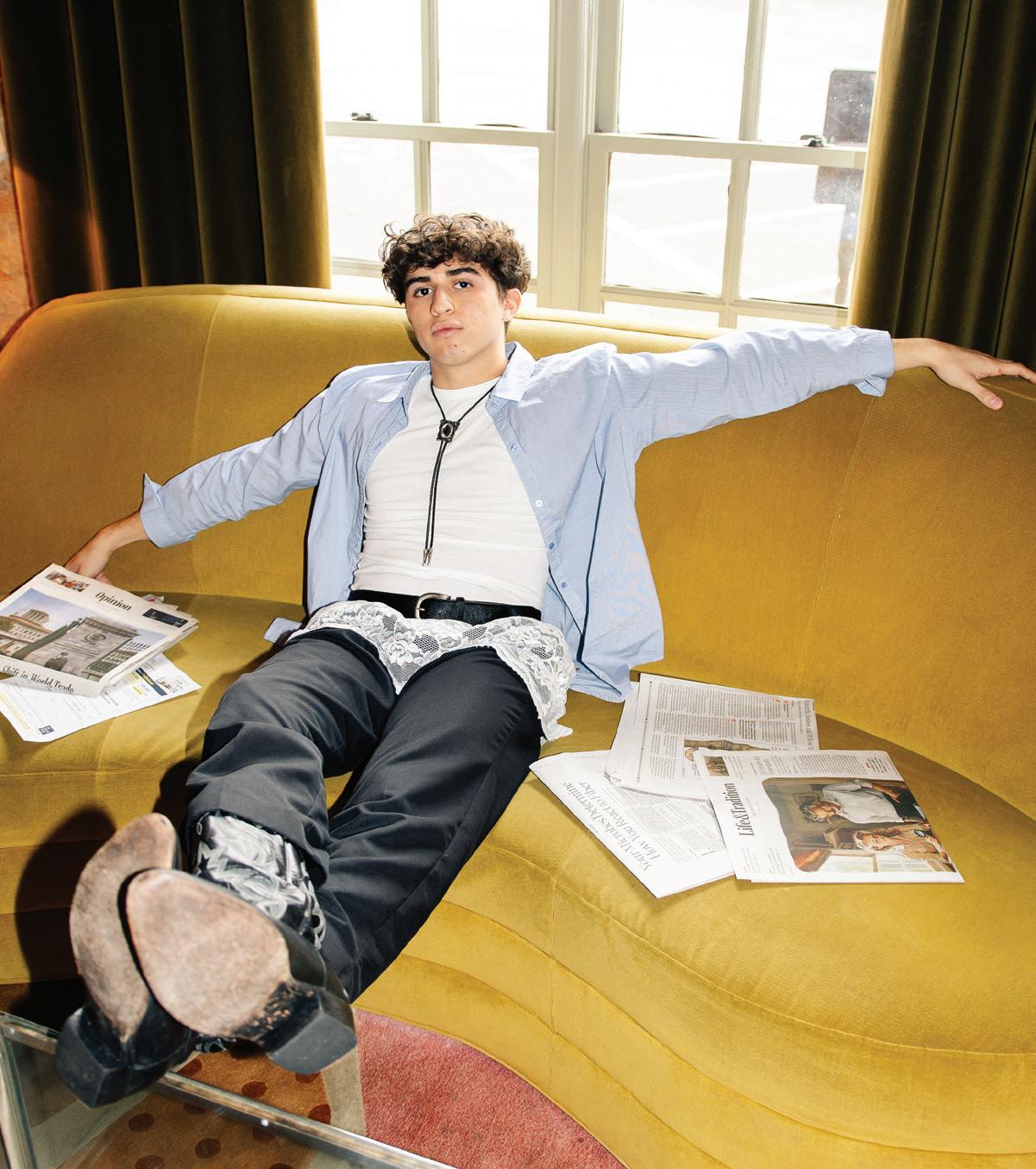
Boho may be back but as her cooler, older sister. Out with the chunky statement belts and widebrimmed hats, in with styles from Isabel Marant and Chloé sporting fringey looks with long draped skirts. While your favorite suede jacket may be from the thrift store or your grandmother’s prized possession, the unique blends of suede and fringe from the ‘70s are being revived this season. Reflecting today’s society, the ‘70s were a time of self-expression and freedom of choice in fashion for women.
Specifically, suede and denim ruled this ground-breaking era. These materials influenced differing hemlines and relaxed feels, opposite of the tailored suits of the sixties.
Suede ruled this era because it perfectly encapsulated the soft browns and red tones of the ‘70s. Additionally, suede could be translated onto any clothing item in the current fads: bell bottoms, maxi skirts, or slim-fitting dresses. Coming to embrace the freedom
in fashion, fringe reflects the playfulness of the time. Designers began to incorporate fringe, gathering inspiration from Native Americans in the early ‘70s. However, fringe was most easily spotted on the fashion scene with musicians like Ringo Starr and Twiggy sporting it in their performances.
Whereas suede and fringe were the season standout, polyester was most popularly used in production for each garment. During this time, government spending increased

productivity in cheap, conceptual fabrics, thus polyester fabric made from plastic was born. Remarkably, polyester did not require ironing, making it a prime choice for women in the workforce. Additionally, the fabric delivered runway looks to the average consumer, causing a decline in demand for couture and the rise of ready-to-wear luxury fashion. With this, Missoni created double-knit polyester looks, which featured a seamless inside. The value of polyester
decreased when users became annoyed at its ability to absorb odor and unbreathable qualities. Also, polyester moved from high to low bulk, causing materials like Crimplene to go out of style, bringing in the lighter trevira. Trevira allowed puffy sleeves to be incorporated which was a far more breathable option. Additionally, with disco fever, came the need for spandex for stretchy materials. Lurex fabric was necessary to sparkle and reflect the lights of a disco ball to stand out inside the crowded nightclubs. To get into these clubs, only the most fashionable disco gear was allowed.
Let’s count our lucky stars that Boho has returned with better materials. Although we loved the classic styles from the ‘70s, the revamp proved to be more environmentally and personally friendly. Ditching the plastic fibers comes with a wider range of styles, and reflects the current society we are in. Now, this trend has refined and become more polished. The romanticism of boho is back in ruffles and expressed with a rock-chic attitude.




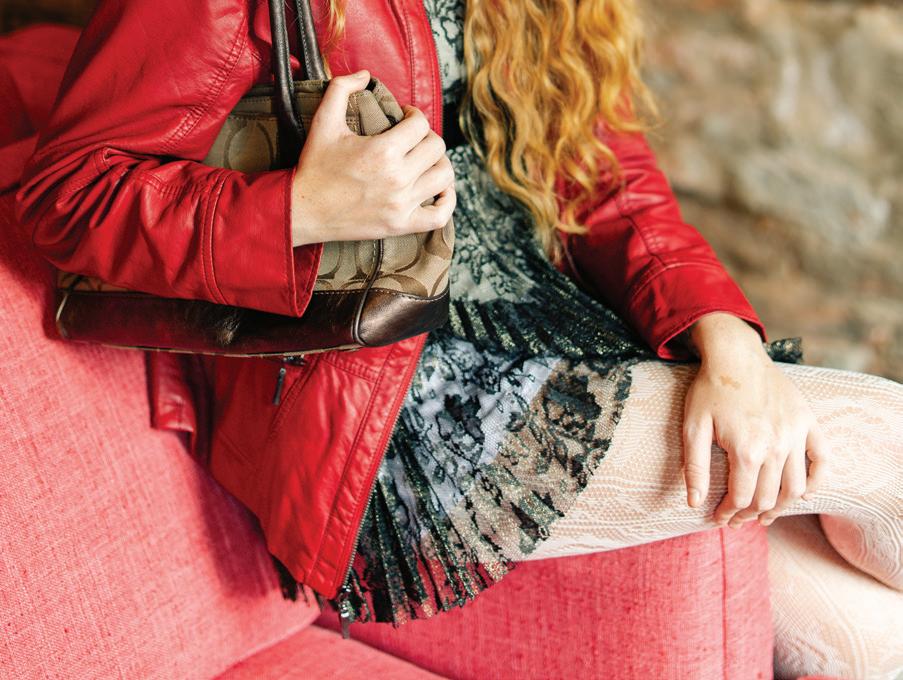
Isabella Sanchez
Camp…what is it? The camp style is typically defined by its exaggerated, unique and theatrical look. While challenging conventional fashion norms, camp culture also allows for sustainable self-expression. Susan Sontag described in her 1964 essay “Notes on Camp” that this particular fashion sense can be characterized by its appreciation for bad taste. Her take on camp, which focused on stylization rather than beauty, blew up and began what would be a long and complicated history of this style. It became extremely popular amongst the queer community in the 1980s and 1990s as it became a political force in queer life, especially during the AIDS crisis. Queer theory rediscovered camp as a way to criticize oppression and hypocrisy. Fashion was being used as a tool for both expressing yourself and letting the world know what you stand for.
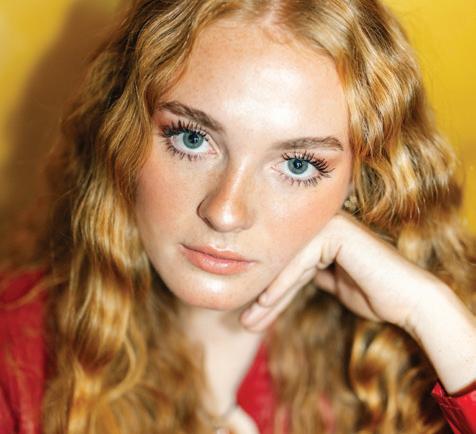
The camp renaissance stirred again in the 21st century, giving us one of the best Met Gala themes to date: “Camp: Notes on Fashion.” This created a cultural shock wave that brought younger generations back to the trend. The way Camp embraces the “ugly,” or “unconventional,” turned heads toward what was previously seen as outdated clothing. Teenagers and influential figures began to look at the early 2000s for inspiration. Jeans with cami tank tops and bedazzled army hats were so back. Where is the best place to look for pieces like this? The bins! Not only was there a resurgence of campiness, but a new affinity for thrifting and vintage shopping arose. Clothes that hadn’t been worn in years were finally getting to see the sun again. The rebirth of mixing colors and chunky clothing to create something stylish rather than conventionally beautiful influenced young people to take a break from fast fashion corporations and see the value in repurposing clothing. People are no longer afraid to wear sensible knee-length jean shorts and a camo baby tee for a fun night out, and it’s saving the fashion world! That being said, The Met is not the sole perpetrator of camp. Many influential brands have been on this wave since it began. Jeremy Scott, one of Moschino’s most influential designers, was a standout artist when it came to embracing the unique. He dressed Katy Perry, Gigi Hadid and
many prominent faces in fashion for years. Big brands like Moschino have done much for this culture by letting individuals express themselves without limits. These important and established figures in the world of camp draw attention to it. Bright colors, crazy patterns and unconventional shapes have created a sense of freedom in the fashion world. The queer community deserves their flowers for embracing this style through thick and thin. The ironic nature of camp subverts gender roles and gives them the power to neutralize homophobia and transphobia. This makes the culture extremely important to their lifestyle and provides context for their loyalty to the style. With more eyes on a trend that embraces chaos, there are more consumers turning their efforts towards clothing of the past, being more sustainable while also “updating” their style!


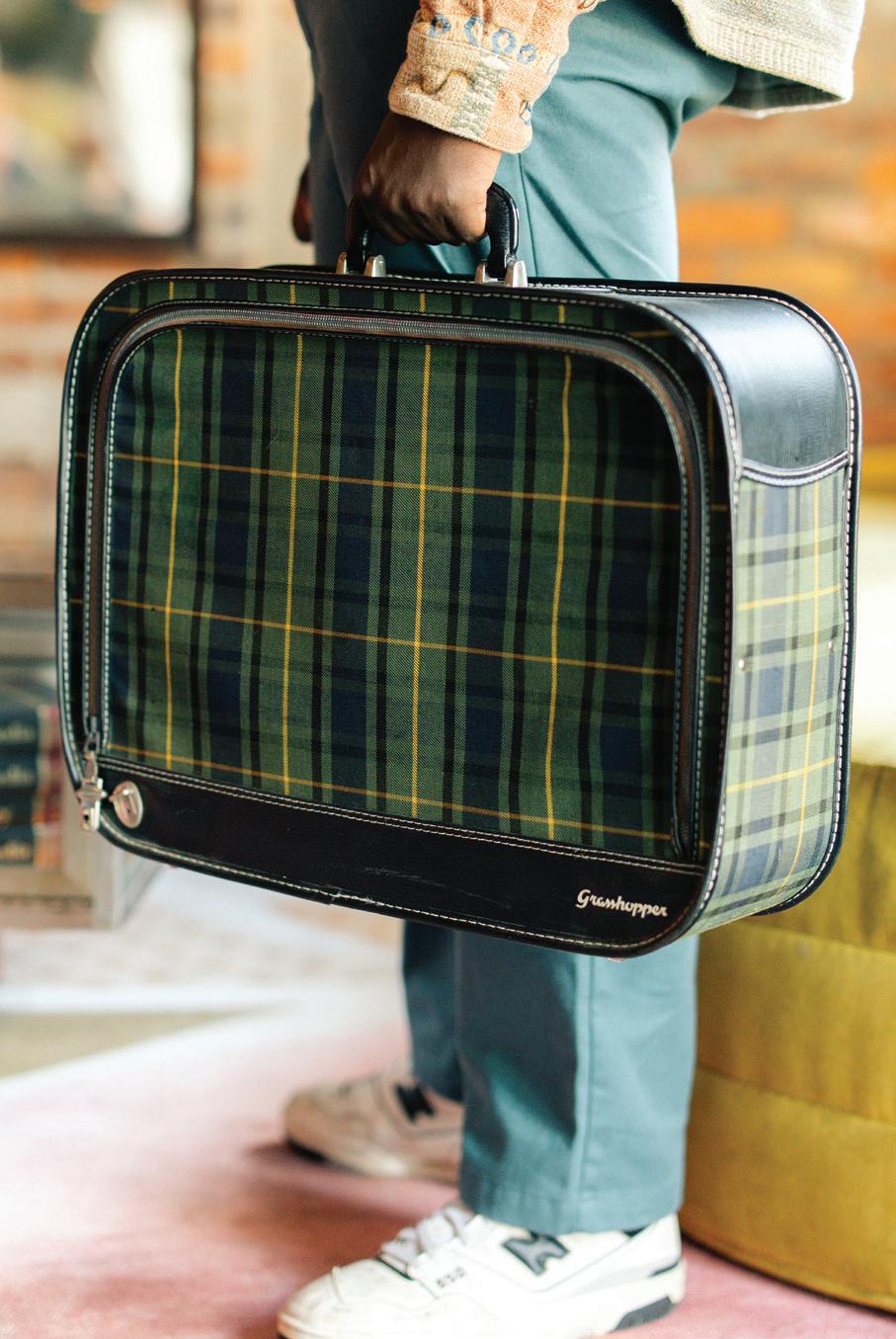
Thepopularity of lace arose in the 16th century among European royal and noble classes, serving as a status symbol to the wealthy. Collars and trims were adorned with delicate lacy patterns derived from silk and linen, amplifying its unattainable nature. Lace was notorious prior to the Industrial Revolution for a time-consuming creation process, with two traditional methods: needle lace and bobbin lace. Both can take hours to days to even months to complete,
feminine and antique essence, fashion houses seldom shy away from the atypical integration of lace in their creations. Rodarte’s Spring 2025 collection is an ode to the golden West Coast– an ethereal depiction of the power of lace in storytelling and art. A plethora of gowns and skirts are embellished with patterns that resemble the sun and floral arrangements in colors both light and dark, mimicking the hues of dawn, dusk and nightfall. It is in collections like these that we see the versatility of










In the past, lace was either a symbol of seduction or in the context of its origin, royal status. Instilled in the minds of women and girls, it was not to be a casual commodity. Now, the mass media depicts lace in a more liberal, inventive manner. Shifting from the confines of expectation, and even the modest standards we were familiar with as children, ignites a new wave of creativity for everyone. To continue to use and develop versatile materials in abnormal ways is key to the redefinition of what the world of fashion is, and what it intends to become.









The Parisian designer brand Coperni is no stranger to pushing the boundaries of fashion with experimental silhouettes and materials, but no designs have embodied the intersection between science and style like the AirSwipe bag from Coperni’s AW24 ready-to-wear collection and the spray-on dress showcased in their infamous runway stunt at Paris Fashion Week in 2023.
The AirSwipe bag is made of 99 percent Aerogel, a NASA-created nano-silica material that itself is 99 percent air. Aerogel is extremely insulating, high-heat resistant, bulletproof, and incredibly lightweight, making it NASA’s medium of choice for catching stardust and other highspeed space debris. Coperni founders Sébastien Meyer and Arnaud Vaillant took advantage of these qualities to create something practical, fashionable, and undeniably true to the brand’s technologically advanced image.
Aerogel is, as of right now, very expensive to produce. It requires relatively costly chemical precursors and a complicated supercritical drying process. But, since 2023, engineers in Germany have been working to design more economical production methods for the material that could potentially lower the cost of Aerogel by 70 percent and cut production times down from 10 hours to just 2.5 hours.




In theory, this could drop the hefty price tag of the AirSwipe from around $43,000 to $13,000. These engineers also sought to reduce the chemical footprint of Aerogel production and implemented supercritical carbon dioxide, one of the most eco-friendly solvents in the world. As Aerogel is essentially made of glass and air, these manufacturing improvements could one day render the material among the most sustainable on Earth.
The dress sprayed onto Bella Hadid on the runway is just as incredible. It’s constructed of Fabrican, a liquid material made of polymers, recycled or biodegradable fibers, and a quick-drying solvent that evaporates upon contact with a surface, like acetone, among other additives. Fabrican was developed by Manel Torres, a Spanish designer and scientist who was inspired to create an aerosol-propelled spray-on fabric after seeing people spraying silly string at a celebration. The material is machine washable and can be reliquified and reused when a garment has come to the end of its lifespan, serving as yet another indicator of sustainable fashion’s bright future. Fabrican is also incredibly versatile and has undergone trials for use in packaging, upholstery, bandages, face masks, clinical patches, lampshades, and even as a tool to contain oil spills.




With the AirSwipe and the spray-on dress, Coperni proves time and time again that the future of fashion requires the right blend of chemistry and creativity, and that a greener more sustainable age of clothing is possible if we just look to the right places for inspiration.















Highlighting the Importance of Personal Expression Through Jewelry
By: ELLA DRI
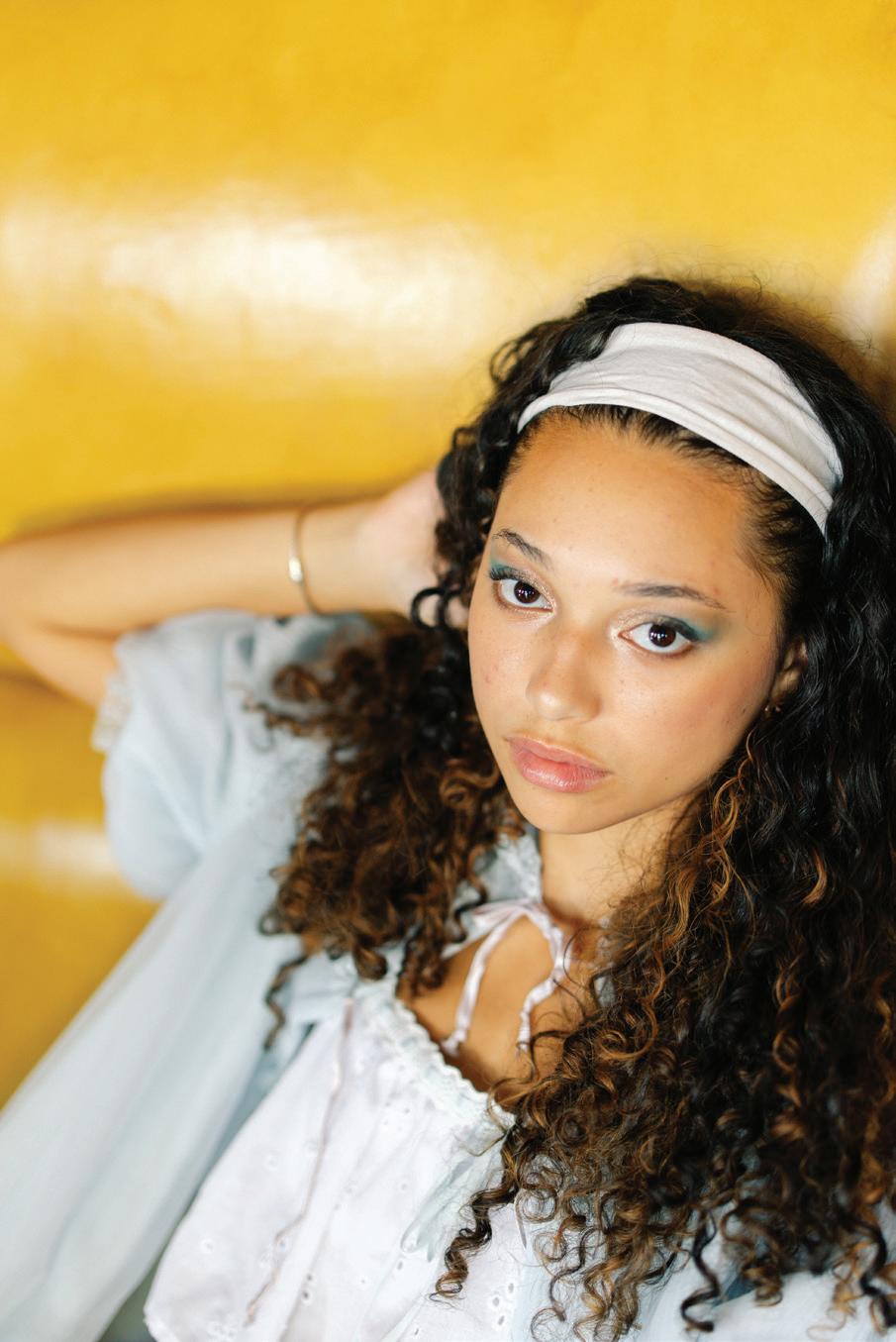
It is no surprise that jewelry plays a glamorous role in the world of fashion. For ages, diamonds have been a girl’s best friend, and sometimes all you need to complete an outfit is that one necklace. Jewelry is a key aspect in making an outfit your own, and many pieces hold deeper sentimental value for their owners. Like many things in fashion, the type of jewelry you wear and, more importantly, how you wear it, has been heavily influenced by social media. Social media has the gift and curse of leading trends and, in the case of jewelry, we see a clear divide. The rise of the “gold girl” and “silver girl” binary is upon us, and the media claims you must choose.


So the question reigns: Silver or Gold? According to the internet, the undertones of your skin determine your best match. Silver claims those with cool undertones, while those with warm undertones are destined for gold. There are now certain qualities associated with each. The embodiment of silver jewelry classifies a cool and understated look, reflecting simplicity and elegance. Gold gets the title of warmth and regalness; it truly makes a statement on its own. These classifications have ventured past just complimenting your undertones and have impacted many people’s clothing choices. We know we are more likely to see silver jewelry with a modern and eccentric look, while those who wear gold exhibit chicness.
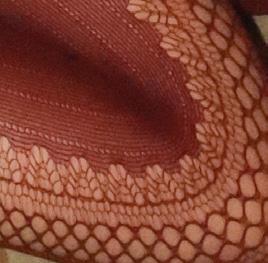
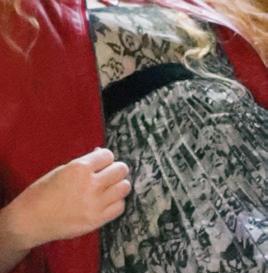

While these contrasting metals lead you to believe that one cannot exist in the presence of the other, that does not have to be the case. Following this ‘silver or gold’ trend, many influencers have presented the idea of mixing both. Whether it be an equal mix of the two, or highlighting a gold piece on top of a silver base, there is much to be explored in the world of jewelry layering and metal mixing. Turning the focus from the type of metal you’re wearing to the quality of the piece itself may be the key to showcasing personality in your look. Some may feel reluctant to follow the lead on this trend, as we see how volatile the media is. The importance of solidifying your own opinions into your style is vital when attempting to resist the swaying of fashion trends. While some may just be copycatting what is seen on the screen, mixing metals embraces a sense of uniqueness. It is often that embracing trends in unconventional ways reflects more individuality than you may
How will you take on this new age of jewelry trends? For many, adhering to what is familiar is the safe option. Yet it is vital to step back and reevaluate yourself based not on the opinions of the media, but on your personal preference. Is it fair to let our inherited qualities guide our fashion choices? While we know that a certain shade of blue makes some eyes pop, redheads look great in green, and a bold lip is for special occasions, do we let that limit us to sticking in those groups? In this new age of fashion, it should be a goal to present unconventional looks in everyday life. The essence of fashion is personal expression, and there is no reason to limit our choices. Transcending norms opens a world of possibility not only to define your style but to express your thoughts and emotions outwardly. While the simple addition of jewelry may not sound great in determining a look, it is often the final touches that elevate and define our style. Whether you enjoy silver’s elegant allure or adore the regalness of gold, it should be up to you to decide.


C H R O M A T I C C H E M I S T R Y



In the 21st century, we are inevitably motivated by physical appearances. Perception is dictated by the visuals presented through clothing, shoes and accessories. Eclectic aesthetics are on the rise, inviting bold color palettes and spunky patterns to everyday outfits. However, the art of styling goes beyond what a person believes goes together, and has been proven to serve a physiological purpose.
Recentstudies are exploring the intersectionality of psychology and fashion, revealing the emotional potential of color in fashion, and the effects of dressing on the basis of sending subliminal messages. Designers and stylists are not lost on the power of their work, incorporating various shapes, fabrics and colors based on consumer response. Individuality and self-esteem are also being accounted for by the intended selection of pieces that flatter body proportions and skin tone.
Modern color trends reflect the diverse cultural landscapes we inhabit, offering endless opportunities for unique interpretations and personal expression. Whether one adheres to the color wheel’s guidelines or boldly pairs unconventional patterns, the world of fashion invites us to embark on a journey of self-discovery and experimentation. Each outfit becomes a
canvas for creativity, allowing individuals to showcase their personality and mood in captivating ways.
Understanding the nuances behind seemingly trivial, routine behaviors in fashion is key to engaging in spaces that truly reflect who we are. This awareness can transform our approach to dressing, turning it into a deliberate act of self-expression rather than a mundane task. The choices we make in our attire can create powerful narratives, establishing visual harmony that resonates not just with ourselves, but with those around us.
As we explore this relationship between color, psychology and fashion, we discover tools to craft our identities through what we wear. From mastering the art of color coordination to embracing eclectic patterns, we unlock new dimensions of our identity. Each choice invites others to engage with our story, drawing them in with the magnetic allure of color and design.


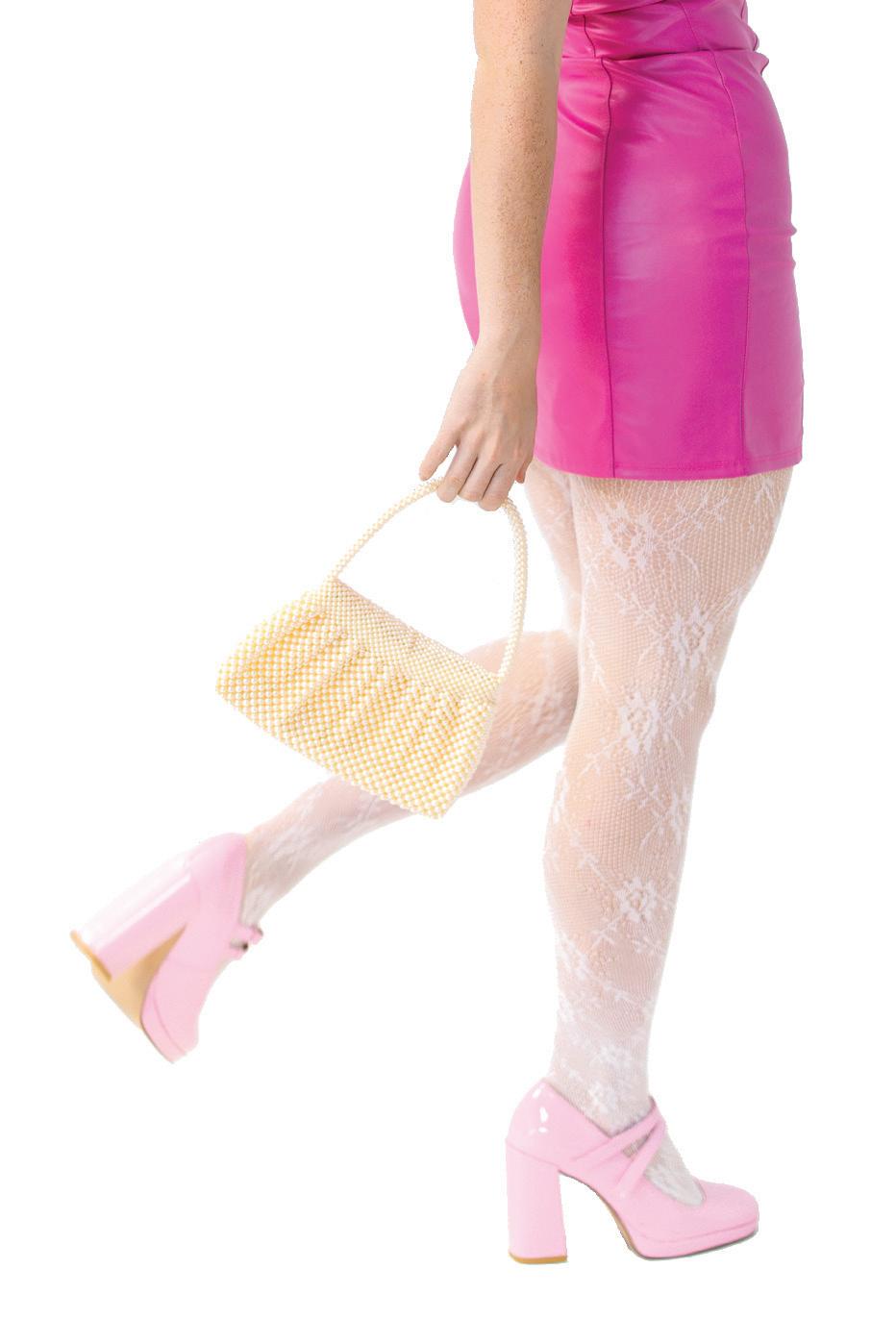
Ultimately, the journey through modern fashion is about more than clothing; it’s about empowerment and originality. By understanding the emotional resonance of color and the psychological implications of our style choices, we can create outfits that not only catch the eye but also elevate our spirits, inviting the world to see us as we truly wish to be perceived. In this vibrant tapestry of self-discovery, we learn that fashion is an art form—a powerful medium that can shape our reality and illuminate our path.






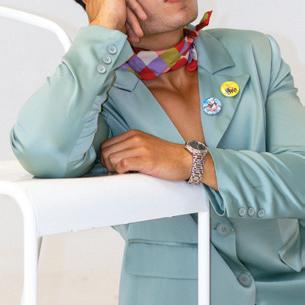


Savanna Waddel
These are the words generally associated with the color red. Color theory claims that red exudes the most superior feelings out of any color on the spectrum. Anyone familiar with the concept of color theory understands that the various hues and tints on the color wheel possess different meanings and usually correlate with our current mood. However, red can represent a multitude of feelings and underlying motives. From scarlet red to burgundy, this fiery color is ideal for those seeking attraction, dominance, or a combination of both.
The psychology of red is extremely powerful and influences our subconscious mind. Maria Minor from Forbes Magazine suggests that “Unconsciously, we expect certain things from specific colors and judge others based on the color they are wearing” (Minor, 2020).
Color plays a starring role in how we view ourselves and others, especially red. Not only can red radiate our aspirations for success, but it invigorates the wearer to believe they can achieve all that they hope for.
Red was one of the first colors that humans could manipulate and produce in numerous shades. In its textile and dyeing debut,
red became a symbol of political and religious stances (Van Braam, 2024). Its connection to social standing and power date back hundreds of years and its notoriety as the color of passion still stands. Although red is often associated with positive attributes, it can also evoke negative emotions. Red is often related to feelings of anger, aggression and rage. The vibrant color elicits dominance, as well. While this is not particularly dishonorable, one can create a sense of wrongful superiority (i.e.,a big ego). Lastly, red carries so much energy in its view that increased exposure may lead to stress and overstimulation (Van Braam, 2024). However, too much of anything can become a hindrance. Contrastingly, red has many positive features. People who prefer wearing the color are often perceived as extroverted and outgoing. As mentioned, red emanates passion, charisma, and liveliness. It is a striking color that leaves others to remember you and the effect of your presence. A 60-year study revealed that football players who wore red jerseys won more matches than any other team (Minor, 2020). Surely, we can establish a link between the recent triumphs of the Georgia Bulldogs and their brilliant shade of “Georgia” red.


While red represents a plethora of emotions relating to high energy and strength, many individuals have used it to represent the power of femininity. Famous figures like Princess Diana, who was often seen in red, displayed confidence in her feminine character and lifestyle. Additionally, Marilyn Monroe became iconic for her bold red lip and helped to solidify her title as America’s sweetheart (Minor, 2020). Recently, however, rugby Olympian Ilona Maher has gained atten- tion not only for her talent on the playing field but also for her decision to don a red lip while competing. Many think that a bold red lip is outdated or tacky, but to Maher, it completes her outgoing personality and amplifies her femininity while engaging in a sport deemed masculine. In an interview, Maher recalls “So I was like, ‘Why can’t I just wear it on the field too’, and feel pretty on the field? It’s not like it’s gonna stop me from tackling hard. And it’s been a cool brand for me now” (LaMantia, 2024). Not only have cosmetics been a supplement for confidence, but notably when red has been integrated into lipstick, nails, and even hair.

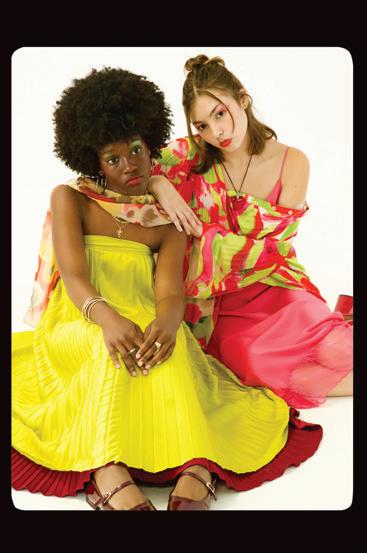
It is remarkable the amount of significance a single color can possess, especially in our subconscious. Red will always be known as the color of passion, confidence, and intensity. It is not just used as a dye for textiles; red is messaging, a display, and intense. Its vibrancy and energy are unmatched by any color. Red is an inspiration to succeed and pursue positivity, be it exuberance or femininity. This compelling color will stay with those who dare to sport it… with boldness, that is.


Remember the mood rings emblematic of life in the early 2000s? Imagine wearing these in a dress form. With the rise of thermochromic fabrics, it’s entirely possible a mood ring dress could make its way to the runway. So what is the mood ring really monitoring, and how could the science behind it be applied to textiles?
The science behind a mood ring is fairly simple. The stone of the ring is made of thermotropic liquid crystals which respond to changes in temperature. Thermotropic crystals are materials that undergo changes in their structure or properties in response to temperature variations. These

external temperature. creating a customizable aesthetic. Some high fashion brands could implement these technologies into a dramatic evening gown, like Dolce and Gabbana. Imagine the visual spectacle of a line of heat-responsive gowns, each featuring a colorway unique to the wearer.
Moving from high fashion to an everyday outfit, think of your favorite pair of Lululemon leggings. Through the implementation of thermochromic textiles, these leggings could cool or warm based on body heat, changing colors during anything from a hot yoga session to a low-impact walk, based on performance and/or emotional state.
Incorporating thermochromic textiles into fashion presents a revolutionary opportunity for the industry. This frontier is demonstrated in the implementation of garments that can mirror the wearer’s environment and emotions by combining cutting-edge thermochromic materials with design


elements central to fashion. Such innovation would essentially allow people to literally “wear their heart on their sleeve,” with clothing that changes in response to body heat and external temperatures. From high-fashion gowns to performance wear, the possibilities are endless. As designers continue to experiment with this technology, the future of fashion may shift towards garments that offer both functionality and an entirely new form of self-expression. Fashion continues to adapt to ever-changing technological innovations, and designers must seize this opportunity to create garments that emphasize these feats.


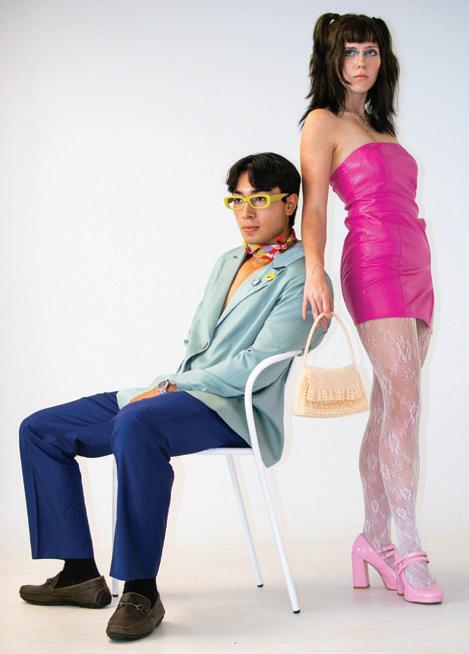



Fashion is more than just the clothes we wear – it’s a powerful form of self-expression that shapes how we see ourselves and the world around us. Our moods and behaviors are influenced by many factors, and one of the first choices we make each day is
Color plays a critical role in fashion. While people typically gravitate towards shades that enhance eye, hair or skin color, the influence of color runs much deeper. Physiologically, they evoke specific emotions. Research shows that warm hues such as reds, yellows and oranges are linked to feelings of energy, passion and excitement. Cooler tones like blues, greens and purples symbolize calmness, tranquility
We often dress according to the situation or season. For example, many of us subconsciously reach for warmer tones in the summer. And while “seasonal depression” is a wellknown phenomenon that affects millions worldwide, there is no written rule that we must wear muted, dark tones in the winter. Society has conditioned us to believe that as the days grow shorter, the air turns

crisp and our skin loses its summer glow, we should respond by dressing in dule, subdued colors as darker tones are often associated with low energy and mood, potentially reinforcing a sense of gloom. But what if we challenged that? Embrace bright yellows, pinks and oranges in the depths of winter. Instead of succumbing to “seasonal depression,” we could cultivate “seasonal expression” –bringing vibrancy and positivity to the darkest months.
A 2020 study found that 51% of participants associate the color black with sadness or grief, while 68% associate red with love and passion. These associations are common and intuitive, but the psychology of fashion extends far beyond just color. It includes patterns and textures as well.
While textures and patterns may not seem as influential as color, they play a critical role in our fashion choices. The concept of “enclothed cognition” explains how clothing systematically influences a person’s psychological state. Specific garments can boost our self-perceptions, helping us align with the environment we are in. For instance, wearing professional attire like a suit can enhance feelings of confidence and authority,

which leads to improved performances in formal and professional settings.
Stripes and polka dot patterns can evoke many emotions, ranging from seriousness to playfulness. Geometric patterns carry their own distinct emotional resonance. Think of famous spaces such as the Guggenheim Museum, which is inspired by organic architecture and the natural world. This structure creates feelings of modernity, sophistication and class similar to the emotions conveyed by geometric fashion patterns. Every color, pattern or texture elicits an emotional response and this intricate relationship in the world of fashion further enriches our outfits. When we decide which patterns to wear, we can communicate various parts of our personalities without saying a single word.
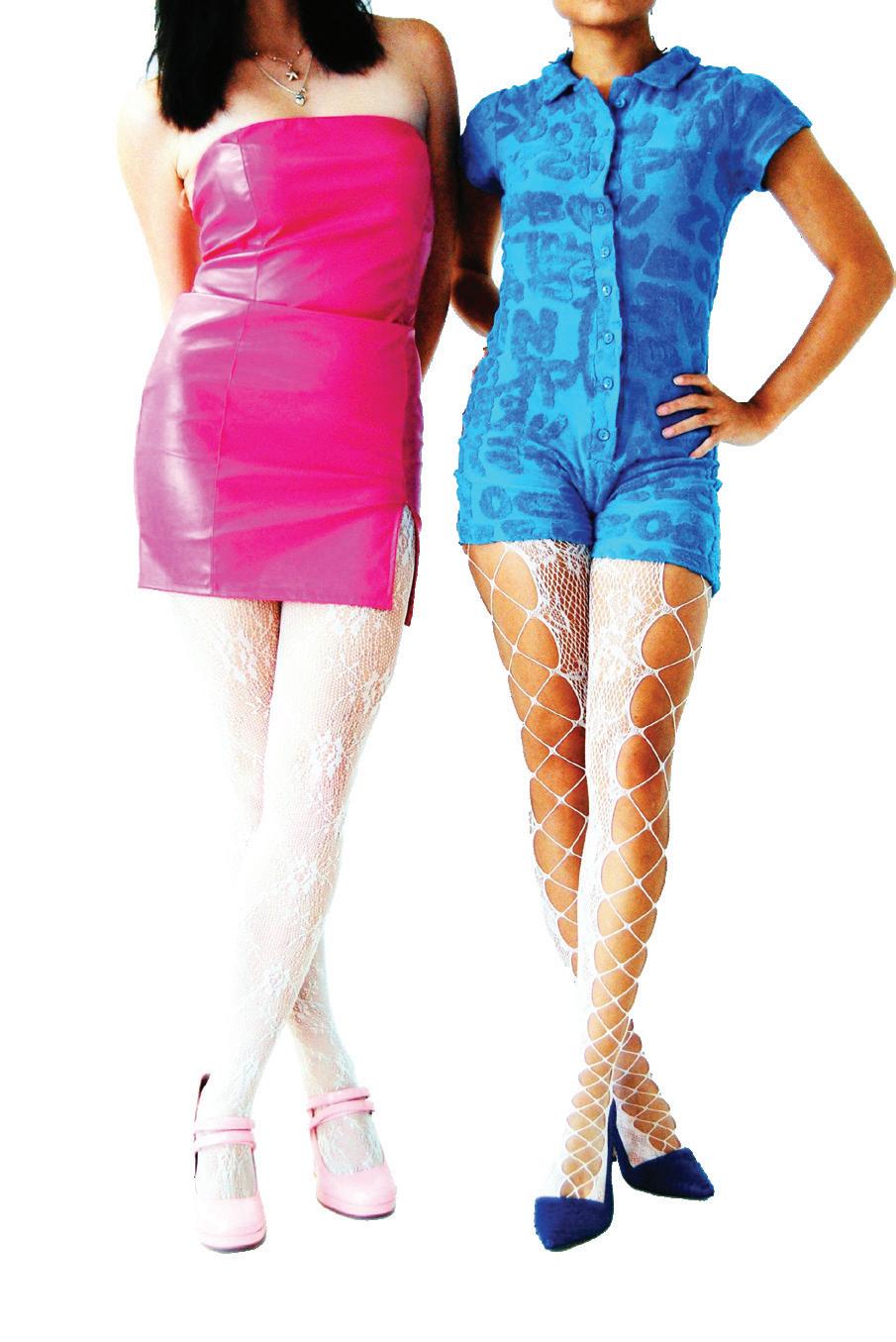

Each outfit we wear tells a story about our lives, a reflection on experiences, aspirations and challenges. Each item of clothing we choose can influence how others perceive us and how we intend to be perceived. Understanding these perceptions can encourage us to make purposeful choices that align with our desired self-image and the impression we want to leave on others. Ultimately, the psychology of fashion is a perfectly rich tapestry woven from threads of color, pattern and personal touch. By embracing the diverse influences of clothing, we continue to enhance our own self-expression. Each choice we make, the vibrant colors we wear, and the patterns that resonate with us, invite exploration and reflection that makes fashion an ever-evolving journey of self-discovery. As we navigate this journey, let’s celebrate the transformative power of fashion, allowing it to guide us in expressing our true selves to the world.




While they started as a men’s shoe in 1949, my first memory of Sambas is somewhere back in 2013 being worn on the indoor soccer field. The ultra-flat shoes with the black base and white stripes were meant to provide traction on the turf adding absolutely zero fashion elements to my already boyish uniform. Basically, my original purchase of these sneakers was a pitiful attempt to improve my soccer skills. I certainly did not foresee the shoes returning as an iconic staple in my wardrobe ten years later.
Before writing my love letter to Sambas, I find it necessary to pay homage to past “staple” shoes that occupied feet during this decade-long intermission. Staying close to home, my next everyday shoe was the Adidas Superstar, but this time, with a white base and black stripes. It wasn’t long before I tired from these and opted for an all-white Adidas Superstar instead. These clunky monstrosities paved the way for the sleeker Air Force 1. I was fairly confident the Air Force 1 was the timeless,
everyday sneaker I would stand by until my life called for a shoe that was more sophisticated than an everyday sneaker.
Until the Samba made its revolutionary return. At first, I was immediately reminded of my traumatic soccer days and wondered how anyone could possibly see these shoes as fashionable. I tried pathetically hard to not fall victim to another trend, under the assumption it would pass quickly and I would be proud I made it out unscathed. I placed Sambas in the same category as the Fila Women’s Disruptor 2 Wedge, more commonly referred to on the internet as “dino stompers”. I put up a good fight, but of course, I eventually caved. I was in awe of how a simple sneaker had the power to raise the question
“Is
the outfit that cute or are the shoes just cool?”


It appears I am not alone in this revelation considering the prominence of Sambas in fashion right now.
Despite being worn by fashion icons like Bella Hadid and Kendall Jenner, these shoes have proved there is a pair out there for everyone.
Moderately priced at $100, Adidas currently offers over 30 unique color combinations. In addition to the style of the original Samba, Adidas has created several spin-offs that still maintain the classic three stripes including Gazelles and Spezials, which come in varying heights of platforms. The countless color combinations and heights are not the only reason for their ubiquity.
These sneakers are so special because of the endless versatility they provide when styling. Whether you are wearing a floral dress traipsing around Europe, a pleated mini skirt with a baby tee in New York City, or an everyday casual jeans outfit, Sambas fit every occasion. Each color variation serves a different purpose, making some customers purchase more than one pair. People are drawn to the classic look and minimalist style that immediately enhances any outfit, granting these shoes the esteemed title of ‘timeless’.
Hopefully, I am correct in my prediction and there will never be a time where I look back at the Sambas trend and feel a rush of embarrassment. If so, at least there will be a substantial number of people alongside me.


By Krista Shumaker
With the 2024 United States presidential election upon us, each campaign is in full force and both candidates are using every tool to convey their message to voters– a large one being their image. Throughout modern history, candidates have used color theory and fashion to send specific messages and signify their party affiliation. The colors they wear aren’t just about style.
They are a carefully chosen means to signal their values and personality to future voters. Color psychology tells us that certain colors and pairings can evoke particular emotions and assess colors’ impact on people’s moods, emotions and receptiveness to new ideas (Obeng, 2018). Color psychology also tells us that humans unconsciously associate colors with certain brands or movements. In the case of politics, color is often used to signal political party affiliation or patriotic values. For instance, wearing bold colors like red or blue can show strength, patriotism, or party loyalty, while softer colors may
may create a sense of empathy or approachability (Birren, 1961). Political parties and candidates utilize color psychology and association within their campaigns. Since 2000, the Republican party has been associated with the color red whereas the Democratic party is associated with the color blue. This color branding allows for each party and their respective candidates to curate their style to reflect their party. This concept of red vs blue began to be reflected within each party’s candidate clothing. Democratic candidates began sporting blue dresses and ties in contrast to the republican candidates draped in red.


Male candidates often use the color of their ties to signal messages to future voters. In recent campaigns, the Republican party has frequently dressed their candidates in a similar uniform: blue suit, white shirt and red tie. This combination mirrors the American flag and presents an image of patriotism. By utilizing this particular color combination these candidates aim to show voters instead of telling them that they are the most trustworthy person for the job.
Red, white and blue are not the only colors in the rainbow and are certainly not the only colors politicians wear. Certain colors have become expected within political fashion, and these expectations tend to favor a more traditional color palette. However, when a politician goes against the norms it makes an impression. In 2014, former President Barack Obama wore a tan suit to a press conference. This singular fashion choice caused a media frenzy, with reporters asking if light-colored suits were “un-presidential.” Ten years after “tan suit gate,” presidential candi- date Kamala Harris paid homage to this fashion choice by wearing a tan pantsuit to the Democratic National Convention, paying homage to her predecessor. The decision to wear a tan-col- ored suit may seem inconsequential, but the reaction to it proves that color leaves an impression.
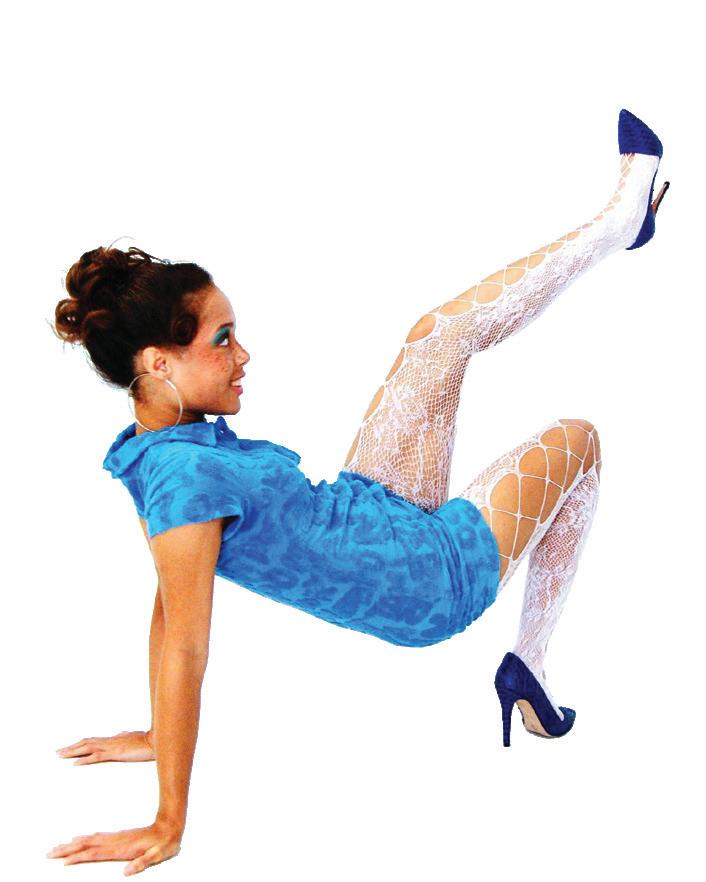
Female politicians from both sides of the aisle have utilized color within their wardrobes for years to make bold statements.


From 2016 presidential candidate Hilary Clinton’s bold pink power suits to United Nations Ambassador and republican nominee Nikki Haley’s Conservative

To Hotel Abacus, University of Georgia’s Science Learning Center, & Studio Evermore
Bringing “The Style Lab” to life wouldn’t have been possible without the support of these incredible organizations.
With love, Rouge Magazine
Adam, H., & Galinsky, A. D. (2012). Enclothed cognition. Journal of Experimental Social Psychology, 48(4), 918–925. https://do
Aiman, P. (2023a, October 12). Thermochromic materials and their role in textile and Fashion Industry. Textile Mentor - Textile industry, Textile designing, Fashion industry and role of textiles. https://textilementor.com/thermochromic-materials-role-fashion-industry/
Ardila-Leal, L. D., Poutou-Piñales, R. A., Pedroza-Rodríguez, A. M., & Quevedo-Hidalgo, B. E. (2021). A Brief History of Colour, the Environmental Impact of Synthetic Dyes and Removal by Using Laccases. Molecules (Basel, Switzerland), 26(13), 3813. https://doi.org/10.3390/molecules26133813.
Birren, Faber., Color Psychology and Color Therapy. New Hyde Park, New York: University Books, Inc., 1961https://economictimes.indiatimes.com/?back=1 “Boho Fashion Is Back for AW24, but Not as You’ve Seen It Before.” Elle Fashion, www.elle.com/uk/fashion/trends/a61850420/boho-fashion-trend-comeback/. Accessed 24 Oct. 2024.
Che, J., & Yang, X. (2022). A recent (2009-2021) perspective on sustainable color and textile coloration using natural plant resources. Heliyon, 8(10), e10979. https://doi.org/10.1016/j.heliyon.2022.e10979.
Coughlin, S. (n.d.). I wore a mood ring for a week & here’s what I discovered. Do Mood Rings Actually Work Predict Emotions Experiment. https://www. refinery29.com/en-us/mood-ring-accuracy-experiment
Dressed in Lala. (n.d.). About Lala. Dressed in Lala. Retrieved from ttps://dressedinlala.com/pages/about-us
Elliot, A. J., & Maier, M. A. (2014). Color psychology: Effects of perceiving color on Psychological functioning in humans.National Library of Medicine. Retrieved from https://pubmed.ncbi.nlm.nih.gov/23808916/ Emmanuel Ohifueme Alegbe, Taofik Olatunde Uthman, A review of history, properties, classification, applications and challenges of natural and synthetic dyes, Heliyon, Volume 10, Issue 13, 2024, e33646, ISSN 2405-8440, https://doi. org/10.1016/j.heliyon.2024.e33646. FARM Rio. (n.d.). Dress in happiness: Women’s Clothing Store Online. FARM Rio. Retrieved from https://farmrio.com/ Fashion graduate creates sustainable and functional hospital gown to improve
patient experience | Manchester Metropolitan University. (2024, April 24). Manchester Metropolitan University. https://www.mmu.ac.uk/news-andevents/news/story/fashion-graduate-creates-sustainable-and-functional-hospital-gown
Fobiri, George Kwame. “Synthetic Dye Application in Textiles: A Review on the Efficacies and Toxicities Involved.” Textile & Leather Review, 20 Dec. 2022, doi.org/10.31881/TLR.2022.22.
Frankel, R., Peyser, A., Farner, K., & Rabin, J. M. (2021). Healing by Leaps and Gowns: A novel patient gowning system to the rescue. Journal of Patient Experience, 8, 237437352110331. https://doi.org/10.1177/23743735211033152
Fujii, N. (n.d.). The art of clothes design for hospitalised patients. In Impact Objectives (p. 45). https://www.scienceopen.com/document_file/8c7293c0-22a24c94-9d6b-666b05225724/API/s16.pdf
“Here’s What You Didn’t Know About New York City’s Guggenheim Museum.” Architectural Digest, 8 Dec. 2022, https://www.architecturaldigest.com/story/you-didnt-know-new-york-city-guggenheim-museum.
Ilchi, L. (2023, January 10). Four fashion maximalist influencers making waves with their eclectic style . WWD.https://wwd.com/fashion-news/fashion-features/fashion-maximalist-influencers-to-follow-tiktok-1235386779/ Jacobs, K. W., & Hustmyer Jr, F. E. (1974). Effects of four psychological primary colors on GSR, Heart rate and respiration rate. Sage Journals. Retrieved from https://journals. sagepub.com/doi/10.2466/pms.1974.38.3.763
Jonauskaite, Domicele, et al. “Universal Patterns in Color-Emotion Associations Are Further Shaped by Linguistic and Geographic Proximity.” Psychological Science, vol. 31, no. 10, 2020, pp. 1245-1260, https://doi. org/10.1177/0956797620948810.
Kanagy–Loux, Elena. “Addicted to Frills: The Fervour for Antique Lace in New York High Society, 1840–1900.” The Journal of Dress History, vol. 4, no. 2, Summer 2020, p. 42. LaMantia, B. (2024, August 26). Why Ilona Maher wears lipstick while playing rugby. The Cut. https://www.thecut.com/article/why-olympian-ilona-maherwears-lipstick-while-playing-rugby.html
Leket, Chamutal. “The Art of Lace | Haute Couture from Chanel to Iris van Herpen.” Fashion Theory: The Journal of Dress, Body & Culture, vol. 25, no. 2, Mar. 2021, pp. 279–87. EBSCOhost, https://doi.org/10.1080/136270
4X.2020.1783873.
Lucas, C. M., & Dellasega, C. (n.d.). Finding common threads: How patients, physicians and nurses perceive the patient gown. Patient Experience Journal. https://pxjournal.org/journal/vol7/iss1/8/
Mander, K. (2024, May 15). Dopamine dressing - a practical guide for real people. The Wardrobe Consultant. Retrieved from https://www.thewardrobeconsultant. com/blog/dopamine-dressing?format=amp Metcalfe, Dr Jessica R. Some History | Fringe. www.beyondbuckskin. com/2011/01/some-history-fringe.html.
Minor, M. (2020, October 20). Wear red-show your strength and confidence. Forbes. https://www.forbes.com/sites/mariaminor/2020/10/19/wear-red-showyour-strength-and-confidence/
Mower, S. (2020, March 1). Balenciaga Fall 2020 Ready-to-Wear Collection. Vogue. https://www.vogue.com/fashion-shows/fall-2020-ready-to-wear/balenciaga
Nast, Condé. “The Runway — Not TikTok — Brought Back Boho Chic.” Vogue Business, 7 Mar. 2024, www.voguebusiness.com/story/fashion/the-runway-not-tiktok-brought-back-boho-chic.
Nguyen, T. (2022, February 28). How kibbe body types became an internet obsession. Vox. https://www.vox.com/the-goods/22950721/david-kibbe-body-typing-explainer
Obeng, Sophia & Danso, Daniel & Omari, Jonas & Kuwornu-Adjaottor, Jonathan. (2018). COLOUR IN FASHION: EFFECTS ON PERSONALITY. 353-377. 10.5281/zenodo.1249188.
Queen of Sparkles. (n.d.) About the Queen. Queen of Sparkles. Retrieved from https://queenofsparkles.com/pages/about-the-designer
Ramzi, Lilah. “A 1970s Fashion History Lesson: Disco, Denim, and the Liberated Woman.” Vogue, 15 May 2024, www.vogue.com/article/1970s-fashion-history-lesson.
Styx, L. (2024, May 22). Dopamine dressing: How to dress for your happiness. Very Well Mind.
Retrieved from https://www.verywellmind.com/dopamine-dressing-how-todress-for-your-happiness-in-2022-5217231
“The Vintage Seeker | Is Vintage Polyester That Bad? Everything You Need to Know about the Fabric.” Thevintageseeker.ca, 2023, www.thevintageseeker.ca/ magazine/is-vintage-polyester-that-bad-everything-you-need-to-know-about-
the-fabric. Accessed 10 Oct. 2024.
“The 70s Have Made a Comeback! | Clothes Lines.” U.osu.edu, u.osu.edu/ clotheslines/2015/12/09/the-70s-have-made-a-comeback/.
Van Braam, H. (2024, February 15). Red color psychology, symbolism and meaning. Color Psychology. https://www.colorpsychology.org/red/ Wright, Chloe. “What Is the Coquette Aesthetic?” Vogue, Condé Nast, 21 July 2022, https://www.vogue.com/article/coquette-aesthetic-explainer.